EDEN
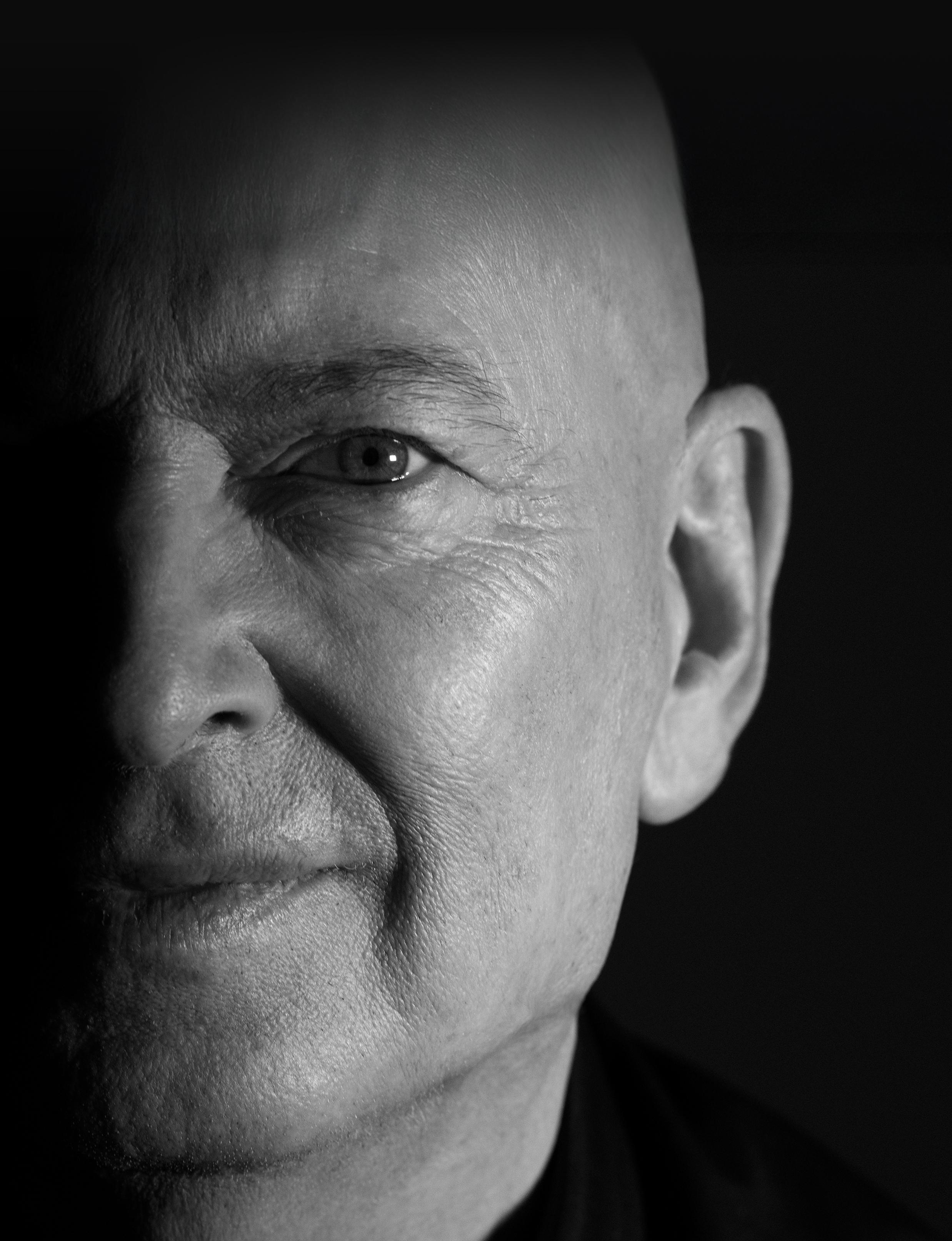
SERATO
WHEN COMPASSION BECOMES A CALLING BRUNO
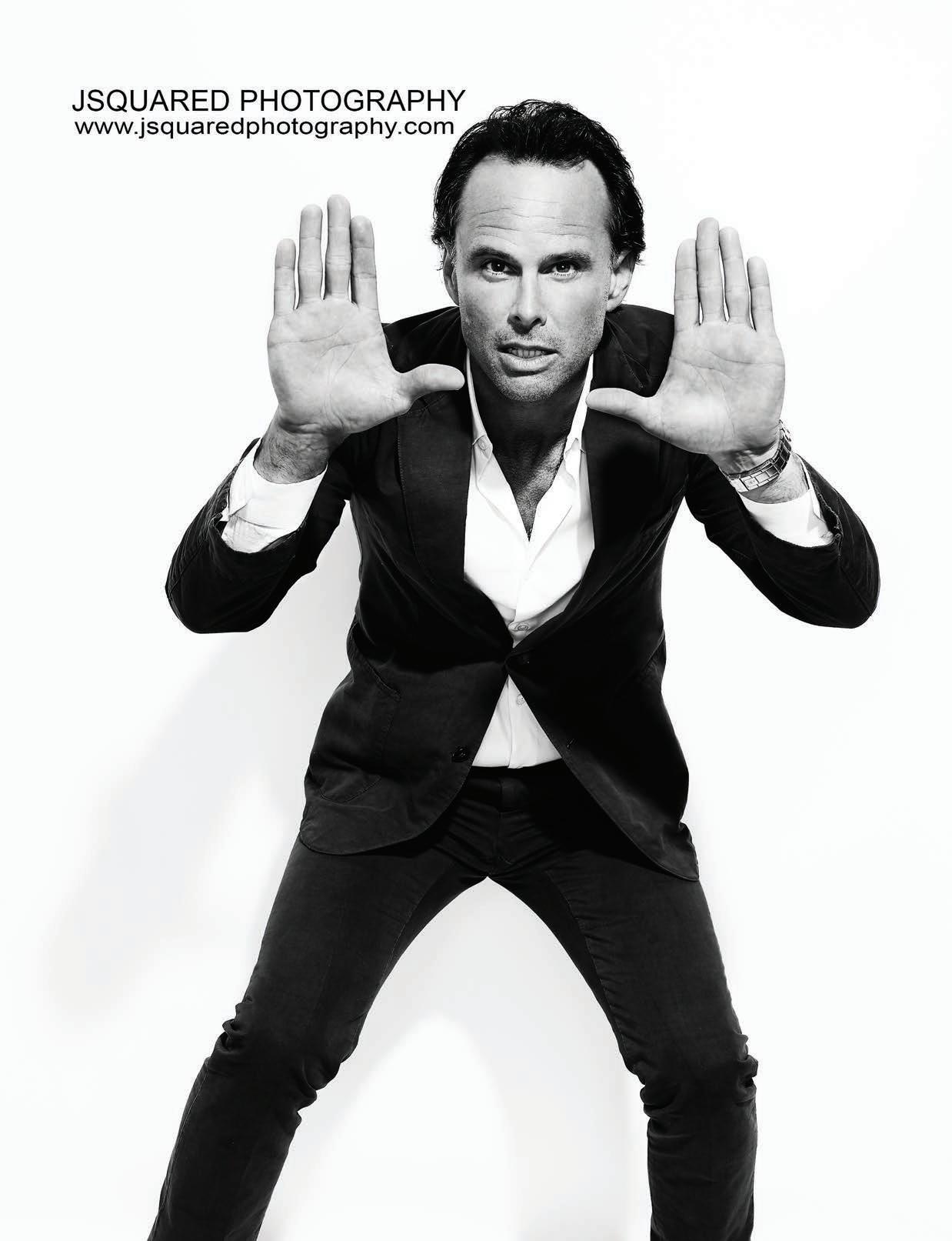




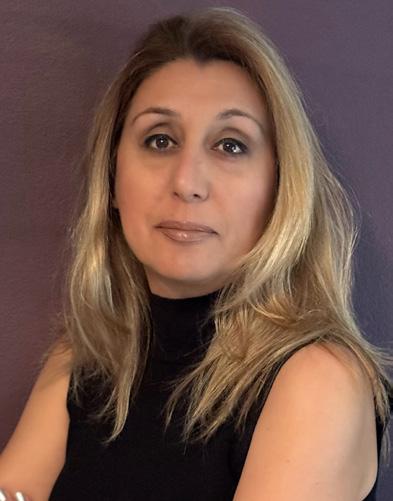
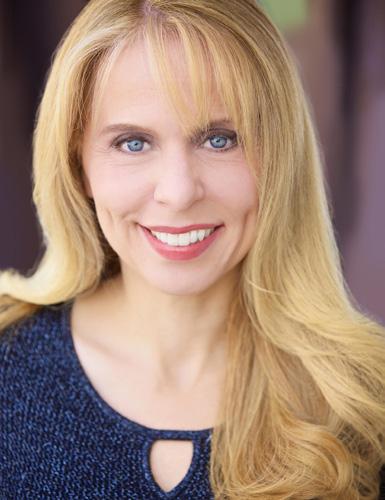
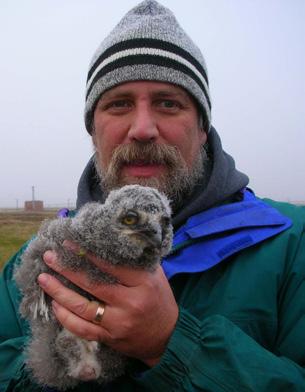
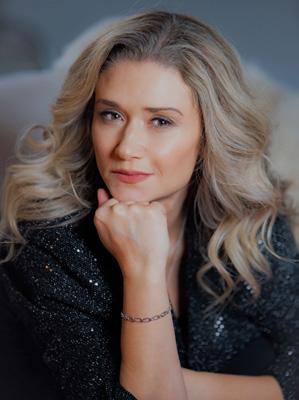

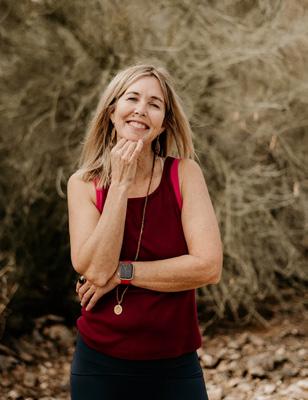
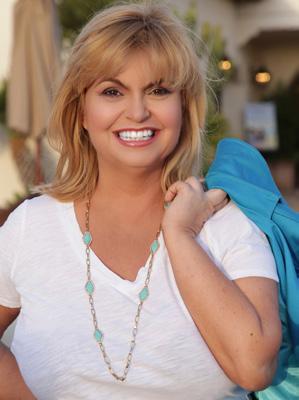

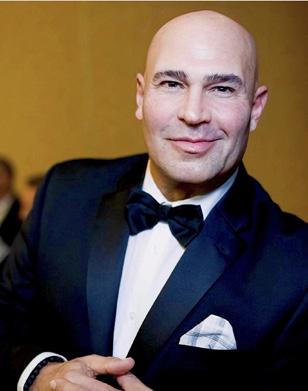
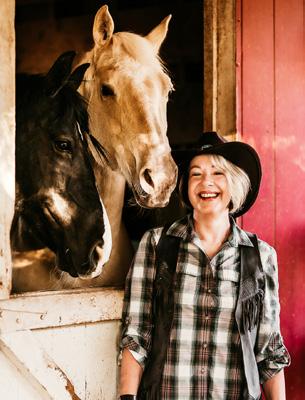
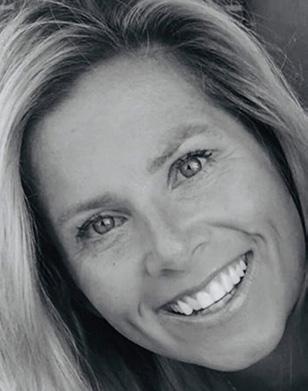


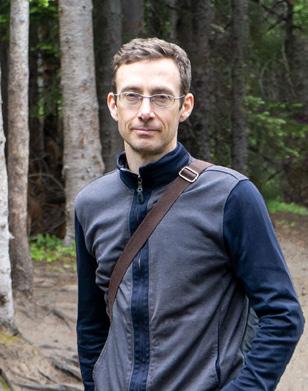
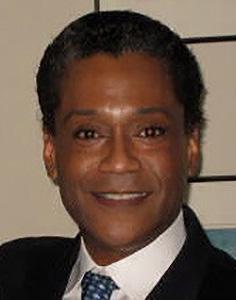
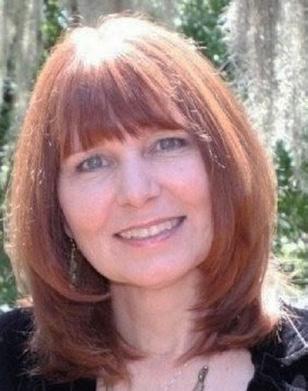


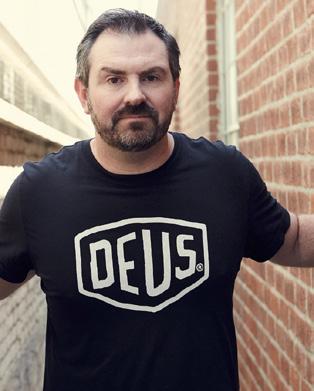
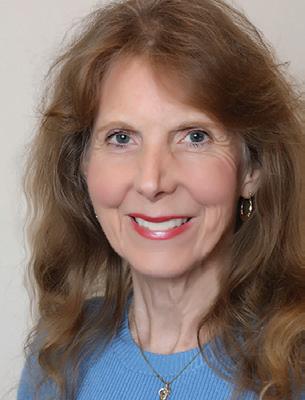
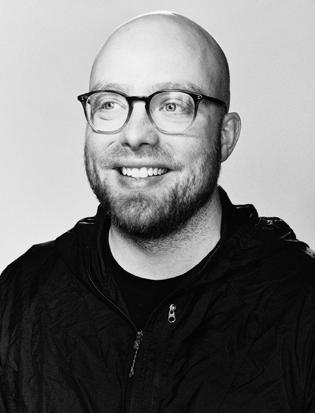
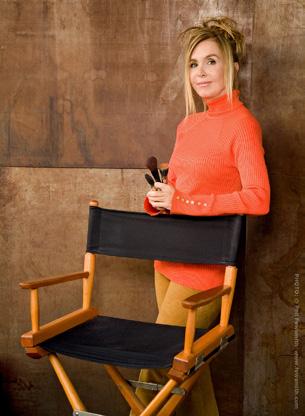
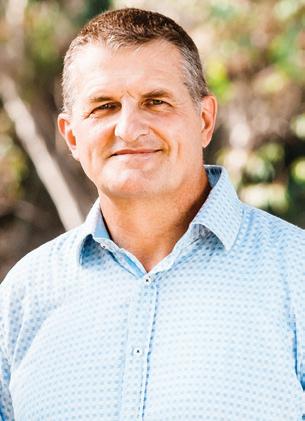


WHEN COMPASSION BECOMES A CALLING BRUNO





























The Eden Magazine is a free online publication is your guide to healthy living, spiritual awareness, compassion and love for all living beings, holistic lifestyle, mindfulness, organic living, positive thinking, sustainability, and personal development
Founder & Editor-in-Chief
Maryam Morrison
Executive Editor/Contributing Writer
Dina Morrone
Contributing Writers
Sadhguru, Isha Foundation
Dulce Garcia-Morman
Susanna Schroadter
Jan Wakefiled
Dr. Rob Moir
Emilie Macas
Nikki Pattillo
Polly Wirum
Alexia Melocchi
Sherri Cortland
Joe Santos, Jr.
Guest Writer
Philip Smith
Contributing Stylists + Makeup Artist
Edward Hakopian
Lisa Joy Walton
Graphics & Photography
JSquared Photography @j2pix (Los Angeles)
Artin Mardirosian (Nexision) (Los Angeles)
Benjamin D. Buren – AliveStudios.Com (Denver, SanFrancisco, Boston)
Sheri Determan (Los Angeles) Greg Doherty (Los Vegas)
Ben Rollins (Atlanta)
Web developer
Brad wallace https://bradwallacedesign.com/
325 N. Maple Dr. Po Box 5132 Beverly Hills, CA 90209




Patchirajan

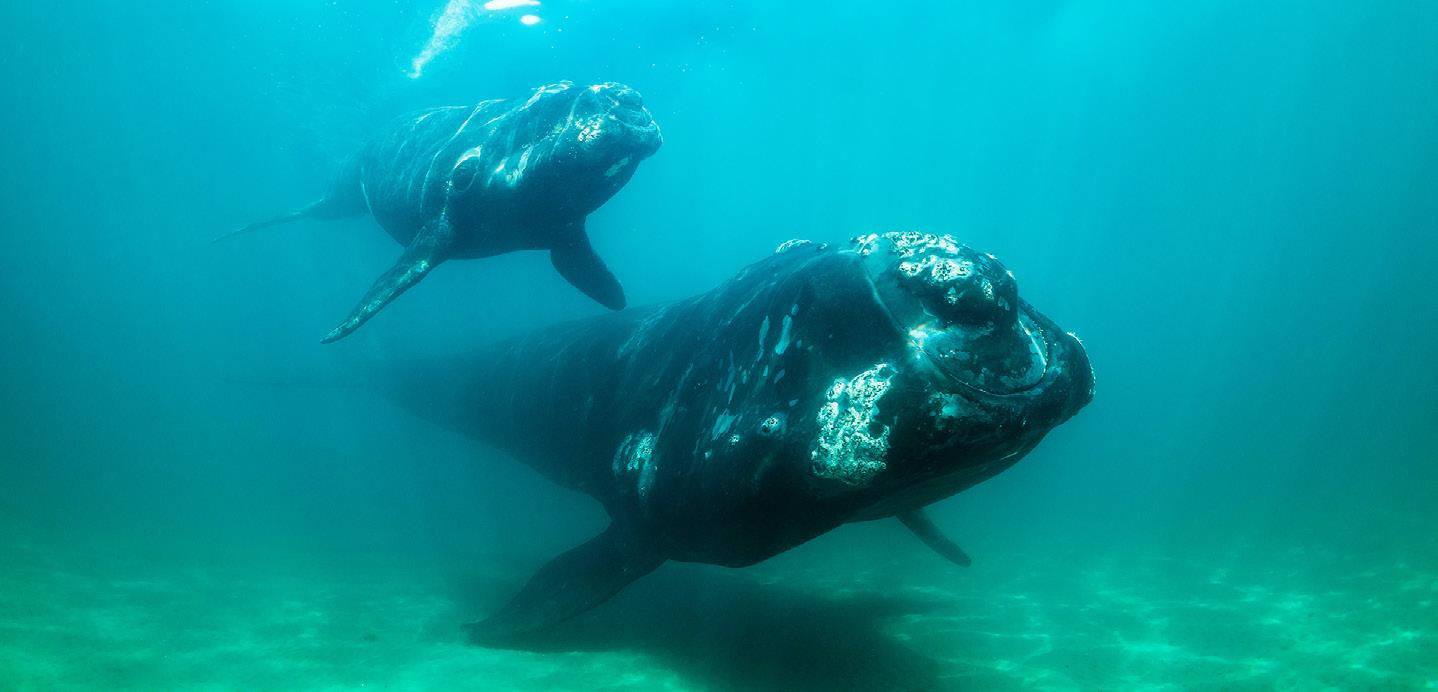
58
TWO RAMBLING FEMALE RIGHT WHALES, FIX OUR WAGON OF PRECONCEPTIONS by Dr. Rob Moir
62
SACRED SPACE IN NATURE FINDING THE DIVINE OUTDOOR by Nikki Pattillo
68 SELF-CARE - LOOKING BEYOND TRENDS by Emilie Macas

76 A DEATH DOULA'SPERSPECTIVES ON DEATH & DYING by Polly Wirum
80
FROM SEA TO SHINING SEA Joe Santos, Jr.
88
WAYS TO MAKE FEEDBACK AN EMPOWERING EXPERIENCE by Becky Westwood





by Michael T. Compton, M.D., M.P.H.

What and how we eat is intimately connected to our physical health. And we know that physical health and mental health are inseparable. Thus, what and how we eat our diet, and nutrition - are closely related to mental health (and our mental health also drives what and how we eat). These facets of life are also related to our interpersonal connections—how we interact with others. What and how we eat is also deeply connected to soil health and sustainability, as small-scale, organic farmers are well aware. And ultimately to planetary health, as so many scientists have affirmed.
So, eating patterns, physical health, mental health, social connections, and planetary health are all intimately linked. Fortunately, the same healthy way of eating is good not just for physical health but for mental health, social connections, and our environment. Traditional diets high in local whole foods (as exemplified by the Mediterranean diet, among others) tend to be good for our health as individuals while also being good for the health of our communities and our land. What is my view of a healthy way of eating—as a mental health doctor and prevention doctor who is also a farmer? A predominantly wholefood (i.e., minimizing ultra-processed foods), mostly plant-based diet with a lot of diversity on the plate.

Just as goodness interconnects with other goodness, things that are not good for our health are also neither good for our mental health nor for our environment. Consider the interconnectedness between large-farm monocultures, genetically modified organisms (GMOs, like Roundup-ready soybeans and field corn), concentrated animal feeding operations, and ultra-processed food—the industrial food production complex. It’s not good for our physical health, our mental health, our environment, or our planet. Large-scale production of meat and other animal-based foods, for example, is one of the key drivers of climate change. I’m not a vegan or even a strict vegetarian. Yet. But I am trying my best to eat “smart.”
In my new book Veggie Smarts: A Doctor and Farmer Grows and Savors Eight Families of Vegetables, I write about a doctor who got smart about vegetables by becoming a farmer.
It’s about my journey leaving behind the big apple for an old stone house and a fertile field, building a thriving organic vegetable, fruit, and flower farm in the Hudson Valley of New York. I explain how nearly all of our veggies, as it turns out, come from just eight plant families from among more than 400 families of flowering plants. Learn about the Brassicas, the Alliums, the Legumes, the Chenopods, the Aster Greens, the Umbellifers, the Cucurbits, and the Nightshades. I share lighthearted scientific facts, like why onions make us cry, beans make us fart, and beets can make our pee pink while giving nutritional information about dozens of vegetables situated within these eight families. I give 16 of my simple farm-to-kitchen recipes, share my joys in growing a bounty of clean, delicious, and nutritious food for CSA (community-supported agriculture) members and farmers market customers, and convey what I learned about the Delamater family who farmed this same land

Dr. Michael Compton is a professor at Columbia University, triple-board certified in psychiatry, preventive medicine, and lifestyle medicine. He is the author of Veggie Smarts: A Doctor and Farmer Grows and Savors Eight Families of Vegetables, available in hardcover, audio, and eBook/Kindle formats, released on Earth Day 2025; for more information about Dr. Comton and his book, visit www.drcompton.health.
some 200 years before me (and what and how they ate). I explain GMOs, ultra-processed food, and why eating local is so important while providing 30 types of “free health advice” to improve your health—like growing some of your own food as a way to connect to nature, nurturing your body and mind.
I got smart about vegetables by growing them. As a farmer, I needed to understand their seeds, their seedlings, how they grow, their biggest challenges across the eight families, their flowers, and exactly when and how to harvest them so that I could best serve my farm customers. And with so much produce around—bushel-baskets full, then wheelbarrows full, then a farmers market delivery van full, and all the while a kitchen full—I needed to get smart about how to eat veggies. This was at the same time when I was learning more about nutrition and lifestyle medicine while also setting personal goals around mindful living and reducing the impact of external pressures on my food and on my life. So, I got veggie smarts, and I hope to make you a Veggie Nerd, too.
What does veggie smarts really mean? Here’s my definition, though it doesn’t appear in the Oxford English Dictionary or Webster’s. Yet. As noted, a key aspect of healthy eating is diversity. Diversity on small farms and diversity on our plates. One way of increasing diversity on our plates is by getting to know our vegetables better. My concept of “veggie smarts” means having a thorough understanding of vegetables so that meals will be more delicious and health will be optimized. It means knowing how the different vegetables are and are not related to one another (in those eight families like, yes, the Chenopods and the Aster Greens), thereby enhancing selections for
a highly diversified way of eating that promotes physical and mental health and prevents or reverses poor health and disease. And veggie smarts is the ability to confidently find, understand, and eat vegetables smartly (like my “eight on my plate” idea), all the while cultivating curiosity about how vegetables are grown on farms and can be grown at home. A botanical understanding of these eight families brings about a culinary understanding of them, which benefits one’s food choices and, thus, one’s health. Having veggie smarts informs decisions in grocery stores, restaurants, the home garden, the kitchen, and around the table. Having veggie smarts is about vegetable knowledge, yes, but it’s also a mindset and a commitment to oneself. My hypothesis, admittedly entirely untested, is that understanding our veggies better is conducive to eating more of them. It sure worked for me.
Now, shedding my overalls and donning my white coat once again. Eating well is about feeling well, preventing disease, and living long. I encourage personal goals— your own goals—around eating well, physical activity and exercise, and the other pillars of lifestyle medicine. Grow some food. Fortify your brain and all of the rest of your body. Cherish and strengthen your relationships—in the garden, in the kitchen, around the table, on nature trails, and elsewhere. Care for our soil, our water, and our air.
Join me in embracing and honoring the deep connections between what and how we eat, our physical health, our emotional and psychological well-being, our connections to one another, and our environment and the planet’s sustainability. Let’s eat well in order to live well.
Vegetable Nerds, Unite!
by Ellen Dee Davidson


What if the forest could speak—and you knew how to listen?
Ellen Dee Davidson believes the forest can do more than speak to us —it can heal. In her new book Sacred Forest Bathing, she explains how reconnecting to the natural world can offer profound healing, intuitive insight, and spiritual awakening—all by reconnecting deeply with the natural world.
Perfect for audiences craving grounded wellness, mystical adventure, or eco-conscious inspiration, Ellen brings a unique voice to the nature-healing conversation.
Today, I am hiking through the blooming yellow skunk cabbages, nestled into the wetlands like a Monet garden. Their pungent, spicy smell fills the air. Winter wrens sing overhead. Every once in a while, I spy a small brown bird tucked in and partially hidden, like a little mouse snuggled into the roots of a fallen tree. Winter wrens are so plain compared to the magnificence of their songs, which fill the air with the joy of spring. Ah, to be alive to witness another spring! I sing along with the birds. One wren pauses her song as if listening and then sends another musical phrase shimmering through the forest.
Laughing, I romp down the trail. Spring is so vibrant that I can feel the plants delight in bursting growth. It makes me feel young. Beauty opens me to childlike wonder. Beauty is herself, a goddess. She’s sensual and enticing and lures us in with her attractiveness. She’s the most natural being in the world. Everywhere, nature creates exquisite beauty, whether it be rivers, deserts, rocks, mountains, forests, clouds in the sky, oceans, or canyons. Beauty is easily found in all ecosystems.
Beauty brings us home. We want to notice her, and that gets us right here, living in the present moment, the way so many spiritual teachers have recommended. Beauty is my easiest path into the now. I’m not the first one to notice the potency of beauty. Art-
ists, poets, lovers, and many of us seeking a creative muse have been inspired by beauty. Tasting the tip of a tender fiddlehead fern, I think of how utterly sexy spring is. Plants are plump and juicy, colorful and enticing. If I were a bee or wasp, the yellow stamens of the white trilliums would be impossible to resist. Even to me, they look delicious.
To me, trilliums seem like the unicorn of flowers: rare, pure, elegant, and ethereal. The facts about them make them seem even more mystical. Each flower yields one seed per year, but the plants can live for almost twenty-five years. Still, it takes nine years after germination for a single trillium flower to bloom.
Perhaps most amazing is that the ones found in the ancient redwood forest, Trillium grandiflorum, are given their start in life by ants! Attracted by the sweet coating covering the seeds, the ants carry them underground into their colonies. They have been seen carrying the seeds as far as thirty feet away from the original plant. Once the ants have feasted on the sweet coating, the seeds are put on the ant compost pile and left to grow in a perfect underground environment. No wonder my trail is literally lined on both sides with trilliums.
Putting my nose a few centimeters from the flower, I inhale a fragrance too exquisite for words—although I’m a writer, and so I try.
“It smells like an understated plumeria blossom,” I tell my friend.
“Much more delicate,” Allegra replies.

Ellen Dee Davidson has worked as a creative writing, piano, and elementary school teacher and is the author of a number of children’s books, including Wind, which won the Nautilus Gold Award, and The Miracle Forest, a bilingual picture book telling the true story of how a community in Colombia found a miraculous way to restore rainforests not seen in the area for thousands of years.
She is a member of TreeSisters, Awakening Women, and the Earth Treasure Vase Global Healing Project.
She lives in Humboldt County, California, where she has fallen in love with the ancient redwood forests.
I agree, continuing to think about the goddesses of beauty. Freyja pops into my consciousness. I’ve been part of an Awakening Women Sadhana offered by Chameli Ardagh, and we are delving deep into the mythology of Freyja. There are many definitions for the word sadhana, which is a Sanskrit word roughly meaning “going directly to the goal of realization through spiritual discipline and various practices.” One method to do this is to evoke and embody the qualities of a deity. In spring 2023, I attended an online twenty-oneday experiential sadhana led by Ardagh, during which we embodied Freyja’s qualities. This was easier to do for me with Freyja than it had been with the goddesses we’d previously studied, such as Inanna. Freyja felt like me! She’s a majestic Nordic nature goddess, sensually alive, patron of the feminine mystical arts, untamed and free, and loves the forest.
Forest goddesses have arisen in cultures all over the world, wherever trees can be found. My maternal Celtic ancestry has quite a few, including Flidais, the Lady of the Forest, who guards fauna and flora. In the eastern Baltic, there is Lauma, a woodland fae goddess of trees and marshes. A Yoruba goddess named Aja is an Orisha spirit of the forest, kindred with animals, who heals with herbs. Some goddesses, like Arduinna, are specific to a particular forest, in her case, the Ardennes forest region in Belgium, Luxembourg, and France. Asherah is a Jewish tree goddess. Kurozome is the spirit of the Japanese cherry tree. The Dakota and Lakota tribes honor Canotila (Chawn-oh-tee-lah), which means “little tree dwellers.” Even Aphrodite, most often known as the goddess of love and beauty— the word aphrodisiac comes from her name—is also a nature goddess associated with apple trees.
Many of the tree goddesses are also goddesses of beauty. Dancing down the trail, arms waving as if I have more than two, like the Tibetan goddess Tara, who is also the goddess of beauty.
Our culture still worships beauty but, as with so much of the sacred, in a diminished and profaned way. Instead of the irresistible, healthy attractiveness of blooming as who we are, we have been taught that we have to change. Too fat, too thin, too old, too young, too this or that. In an effort to please, we twist and contort, losing the clear expression of ourselves that is inherently beautiful.
We’ve lost the goddesses we are. Free. Fierce. Authentic.
Walking down this trail, I feel free, fierce, and authentic. Gaia comes to me, robed in redwood trees, towering over three hundred feet above me, some thousands of years old. She comes to me in the breath of scented air, the humming song of the forest, the caress of soft zephyrs on my cheeks. She comes to me in sweetness flowing into my heart. Gaia comes to me as a goddess, and this is one goddess of beauty I can get to know directly. I smell, hear, taste, see, and touch her. My perceptual capacity opens, and I know her through time, through the causal level, through the holographic blueprint that glistens energetically in my mind’s eye before taking form in matter. The seed knows the flower before the flower arises.
How do we water the seeds of the world we want? How do we create the conditions for beauty to flourish? How do we allow our own beauty to shine forth?




by Sadhguru, Isha Foundation


Sadhguru: A spiritual process is to burn the very roots of the animal in you and create a situation for the flowering of the Divine. One may not be able to see the fruit of that seed and effort immediately. A weed flowers within a few days, but if you want a coconut tree to flower, it takes six years. Only an impatient fool who does not know the way of life will uproot a coconut tree in the fourth year, thinking it is not yielding anything. If you really want to produce something worthwhile, it takes time. But if the seed is right and the way we nurture it is good, the fruit is bound to happen – there is no doubt about it.
The word “spirituality” is one of the most corrupted words on the planet. It has been used and misused in a million different ways, largely because of ignorance and, many times, out of unscrupulousness. Because of this misuse, it has generated a level of confusion and doubt in people’s minds about whether it is really worthwhile or not. It has created a phenomenal sense of uncertainty. Even after walking the path for many years, people have doubts because there has been so much ambiguity and such a level of misunderstanding.
Whatever we think in our mind cannot
be spiritual. You cannot have a spiritual thought. Whether you think about God, heaven or liberation, that is not a spiritual thought. Thought is essentially psychological; there is nothing spiritual about it. We can think about spirituality, but thought can never be spiritual. It is like saying I have a spiritual little finger. The finger is plain physical. It can only be physical. Maybe I have made my physicality in such a way that my little finger and my whole body have become a conducive passage for a spiritual process, but still, it is not spiritual. It is a good, physical little finger. It can be a block, or it can be a gate, but it is physical.
The physical is not against the spiritual. It is only because we have a physical body we are thinking of another dimension. Otherwise, it would never arise. If we did not exist here physically, the need for a spiritual process would never have risen anywhere at all. So, physicality is in a way the fundamental of the spiritual but physical can never become spiritual. Similarly, the psychological and the emotional can never become spiritual. They are different dimensions of life, and there is nothing right or wrong about them. It all depends how you use them. We can use this body as a barrier and a trap, or we can use this body as a passage. Similarly, we can use this mind as a misery-manufacturing machine or we can use this as a possibility for a spiritual possibility. But mind, body and emotion cannot be spiritual.
When we say spiritual, we are talking about a dimension that is not physical and does not belong to this realm. If all we are looking for is mental peace, that is not spirituality. People talk about spiritual peace. There is no such thing. Peace is of the physical and the mental. You can disturb the physicality and the psychological; you cannot disturb that which is neither of these two things. It is neither seeking peace nor does it need peace.
The integrated mechanism of body, mind, emotion, and physical energy together has made what you refer to as “myself” physical. Though this integrated mechanism and the rest of the existence are the same material, because of its integrity and the way it is constructed, it looks absolutely individual right now – so perfectly individual that you cannot believe this and that could be one. Everything that this creation is is just the five elements –earth, water, fire, air, and space. The same five elements have become such a fantastic amalgamation and have become a human being. It is just the play of these five elements, but the play is so beautifully constructed it does
not need to draw from anything. It is so complete by itself that we begin to question the very existence of the creator. That means it is really perfect. If it could not function without a morning and evening prayer every day, this is not a perfect creation. This is so perfect you can forget the creator. That is a real compliment as to what a wonderful piece of creation this is.
Even if you blow bubbles in the air, the inside and the outside of the bubble are the same stuff, but still, it has a distinct identity. This individual nature is just like that. The inside is the same stuff as the outside but there is just one little crafty barrier – such a crafty barrier that you cannot see where it is. Whichever way you look at it, there seems to be no barrier, but there is a distinct barrier between the individual and the rest. It does not matter how hard you try; it is still there – you tell someone you love them, but the next moment, it is thinking, “Is this guy alright?” It is from the same material. The water inside water, the air inside air, mud inside the mud, but the distinction is so beautifully crafted; you cannot understand how.


Experience Yoga in its classical form at Isha Yoga Center Los Angeles and Isha Institute of Inner-sciences. Established by Sadhguru, the centers serve as powerful spaces for inner transformation and raising human consciousness. Located in northern Los Angeles County and Tennessee, the centers offer an array of yoga and meditation programs in a vibrant and conducive ambience.
You are invited to Free Yoga Day, a monthly open-door event a t the center. On this day, we offer a variety of free sessions dedicated to educating and empowering individuals to take charge of their well-being through simple but powerful practices sourced from the Yogic tradition.
Learn more at ishausa.org/la

Unwavering Attention
If we want to know the intricacies of this human mechanism, it is one way. If we just want to cross the barrier, it is another way. But one who does not cross will never know. For one who does not break the barriers, there is no possibility of knowing. First comes breaking the barrier, then knowing, which is a much longer process. But if you just want to enjoy the freedom and bliss of crossing the barrier, it is much simpler than knowing because knowing takes much more. To break the barrier, all it takes is an intense dimension towards any one thing. This is not possible for people who are “multi-tasking.” That is a very common word nowadays.
People who are multi-tasking are going in five different directions at the same time. One who goes in five different directions obviously does not go anywhere. They will do many things; in a social context, people may clap their hands, but they will not move an inch within themselves. I am not referring to multi-tasking the way corporates are talking about it. It is just that people are constantly shifting. They are constantly grazing all over the place. Animals that graze do not go anywhere. The stomach becomes full, but you do not go anywhere. That is always the quality of grazing.
If one wants to go somewhere, one has to stick to one thing. Truth or the divine does not need your assistance. It will happen without you. It is just that you can deny it to yourself. People bring enormous amounts of punishment, pain, and suffering upon themselves, not necessarily because of a life committed to evil. Their life may be committed to spiritual well-being, but every day, they choose and re-choose. They keep destabilizing themselves by constantly falling off and falling on.
We will bring enormous trouble to ourselves if we do not allow life to form itself – if we keep disturbing that which is taking shape. Every time you choose and un-choose, you distort the course of your destiny. Maybe you unchoose the path you are on because of some situation that you experience as frustrating. But even if in a few hours you are again on, by un-choosing yourself for a few hours, you have destabilized the formation and course of your destiny.
A determined mind, a mind whose choice is permanent, will allow destiny to flow the way you have chosen. If you think something is worth it, there should be no turning back. If it is worth it, that one point should not change. On the way, so many things will come and so many challenges will be there. If one has to successfully go through all these things, that one unchanging point is needed. For one who is unwavering in their intention, liberation cannot be denied. Otherwise you will not transcend your limitations and the hurdles that come – every hurdle will look like an impossible mountain.
If the goal was fixed, if there is no other way and that is the only thing, people would never think something was impossible. They would always be striving for the possibility. That is what a spiritual seeker should do. That is the first and foremost thing that you must do – establish one steadfast point such that this one thing is not changeable. If you do not compromise on this, the rest of your life gets organized behind you, not in front of you as a hurdle. Life will organize behind you and will support you all the time. Your faculties, your energy, and the whole world will get organized behind you because you have set your intention.


By Archana Patchirajan — Certified Vedic astrologer & co-founder of align27
Vedic astrology, also known as Jyotish Shastra, is an ancient system of celestial interpretation rooted in the Vedas — the oldest scriptures of Indian philosophy. At its core, it is a science of light. It studies how the movement of the nine planetary bodies — Grahas — casts an energetic imprint on our lives from the moment we are born.
Unlike Western astrology, which uses the tropical zodiac, Vedic astrology follows the sidereal zodiac, aligning charts with the actual constellation in the sky.
This precision matters.
When we speak of Saturn entering Pisces, we mean that the planet is actually astronomically in that constellation, not symbolically so.
Each individual has a Janma Kundali, or birth chart, calculator based on their time, date, and place of birth. But Vedic astrology does not rely only on static charts. It unfolds over time through planetary periods known as dashas and is activated by transits — the ongoing dance of the planets across the sky.
Together, these mechanisms form a cosmic clock. And for the next four years, that clock ticks in unpredictable yet narratively rich rhythms.
The next four years: Disruption, restructuring, and the question of truth From 2025 onward, the planetary alignments will test the boundaries of systems built on order, control, and curated truths. Saturn's entrance into Pisces marks a friction point between rational governance and the swelling force of collective emotion. Pisces is spiritual, porous, and idealistic. Saturn is slow, exacting, and unyielding. The result? A global reckoning with illusion — politically, economically, and technologically.
But it's not just Saturn. Jupiter's transition through Gemini and Cancer brings fluctuations in narrative power. Gemini thrives on multiplicity, while Cancer clings to familiarity. As Jupiter moves through these signs, expect the tension between innovation and nostalgia to define global sentiment. This will be a time when misinformation isn't just an accident — it becomes a strategy. Amid this noise, the public will increasingly crave authenticity, discernment, and transparency.
Meanwhile, Rahu, the shadow planet representing insatiable desire, moves through Aquarius. Think digital revolution, algorithmic governance, and the rise of decentralized ideologies.
Ketu, Rahu's counterpart, drifts through Leo, dissolving egoic leadership structures. We may see charismatic leaders fall — not always from external pressure but from internal disintegration. The crowd no longer looks upward for guidance but sideways for collective momentum.
Echoes from the past: Historical parallels to upcoming transits Astrology, while forward-looking, often finds its most profound insights by reflecting on the past. The upcoming planetary positions have historical precedents that offer a lens through which we can anticipate potential global shifts.
• Saturn in Pisces (June 1995 - April 1998): The last time Saturn transited Pisces, the world witnessed significant events that blurred the lines between reality and illusion. The mid-to-late 1990s witnessed the rise of the Internet, which fundamentally altered how information was disseminated and consumed. This period also saw spiritual awakenings juxtaposed with global conflicts, highlighting the duality of Pisces — spirituality and escapism, unity and dissolution.
• Rahu in Aquarius (October 2006 - April 2008): During this transit, there was a notable surge in technological advancements and a push towards globalization. Social media platforms began to gain traction, reshaping communication and community structures. Rahu's influence in Aquarius, a sign associated with innovation and collective progress, highlighted the era's transformative energy.
• Ketu in Leo (October 2006 - April 2008): Concurrently, Ketu's passage through Leo brought challenges to traditional leadership and authority figures. This period questioned established hierarchies and emphasized the need for leaders to embody humility and service over ego and dominance.
• Jupiter in Gemini (May 30th, 2013 - June 18th, 2014): Jupiter's previous journey through Gemini coincided with the dot-com bubble's peak and burst. The rapid expansion of digital technologies promised a new era of connectivity and information exchange. However, the subsequent market crash served as a reminder of the perils of unchecked optimism and the importance of discernment — a hallmark lesson of Gemini's dual nature.

As seen in Well + Good and Your Story, Archana Patchirajan is a certified Vedic astrologer and the co-founder of align27, a time management solution that integrates Vedic astrology with modern-day planning, rituals, and self-care. As an expert in startups and technology, Archana created mycityway, a local search and discovery platform that was sold for 15 million in 2013. Building off of this success, Archana decided to shift gears and pursue her passion for holistic wellbeing, co-creating Cosmic Insights, a comprehensive Vedic Astrology platform, alongside business partner Niravta Mathur. The two then launched align27 in 2018 to help users gain deeper self-awareness, navigate challenges, and maximize their potential by harnessing the wisdom of Vedic astrology. This allows users to use the app as a tool to overcome difficulties and maximize the good.
Understanding these historical contexts allows us to approach the upcoming transits with a nuanced perspective, recognizing patterns and preparing for potential outcomes.
Astrology is often mistaken as deterministic. But in Vedic tradition, it is a navigational tool, not a prophecy. Your birth chart reveals where the cosmic winds are strongest — but how you sail is up to you.
Saturn transiting your tenth house may put pressure on your career path, but it also refines your sense of purpose. Rahu moving through your fourth house may stir restlessness at home, but it also invites reinvention. These are not constraints; they are invitations.
Just as global systems enter periods of transformation, so do individuals. You may be more or less affected depending on the planetary strengths in your chart. Those with a fortified Saturn may find clarity in chaos, building patiently while others flounder. Those with a sensitive Moon may need to develop stronger emotional hygiene — limiting media exposure, anchoring themselves in rituals that calm the nervous system, and identifying the difference between intuition and anxiety.
One of the most accessible entry points to this practice lies in the Moon — the fastest-moving celestial body and the primary lens of Vedic astrology. Each day, the Moon passes through one of the 27 Nakshatras, or lunar mansions, each with its own symbolic meaning and energetic tone. Knowing which Nakshatra is active allows you to align your activities —
whether contemplative or ambitious — with the cosmic current.
This isn't superstition. It's rhythm.
When layered with personalized dashas — those karmic cycles ruled by planets—we begin to see life not as a linear path but as a waveform. Events crest and recede. Some moments are ripe for launching projects, while others are for retreat. The more we understand our own cycles, the less reactive we become to collective uncertainty.
Even planetary mantras, when chanted in resonance with your chart, are energetic recalibrations. They aren't religious relics — they're vibrational tools. When used regularly, they can bring mental clarity, emotional balance, and spiritual resilience. The rituals of Vedic astrology are not about control. They are about coherence.
Why the stars still matter
We live in an age where data often trumps wisdom. But Vedic astrology bridges the two. It is both structured and sacred, technical and intuitive. And as we face the unknown over the next four years — a time of policy shifts, digital surveillance, crumbling hierarchies, and grassroots awakenings — the stars offer more than prediction. They offer perspective.
In this sense, astrology is not about fate. It is about timing, alignment, and readiness. It asks us to remember that while the macrocosm is vast and ever-moving, the microcosm — our inner world — holds agency. The challenge is not to fear the future. It is to meet it consciously.
Because the sky isn't falling, it's speaking.
Celebrating 20 Years of


My ultimate goal and dream is to reach heaven. I've been blessed to accomplish all my dreams in my life—except one: to see every Boys & Girls Club in America establish a Caterina's Club program to feed every child in need. No child should ever go to bed hungry.
In a world often distracted by headlines of division and despair, it is a rare and beautiful moment when we encounter someone whose life is devoted entirely to uplifting others. In this special July issue of The Eden Magazine, we are honored to feature the remarkable Bruno Serato, a man whose story reminds us of the boundless power of Love, perseverance, and service.
For two decades, Bruno Serato had made it his mission to feed the hearts and bellies of children in need through his nonprofit organization. Caterina's Club, named in honor of his beloved mother, Caterina. What began in 2005 as a simple act of kindness in the Anaheim White House Restaurant's kitchen has blossomed into a movement that now serves over 5,000 warm meals every day to children living in underprivileged conditions. That's more than 10 million meals served in the last 20 years, each one a testament
to the compassion that fuels Bruno's unwavering commitment.
Beyond feeding children, Caterina's Club provides transitional housing for families and job training programs for at-risk youth, transforming lives with dignity and opportunity. Bruno's tireless dedication has earned him global recognition, including being named a CNN Hero, receiving a knighthood from the Italian government, being knighted by the Italian Royal House of Savoia, receiving a Papal blessing from Pope Francis, and meeting world leaders whose work he has inspired. Yet, through it all, he remains humble, grounded, and devoted to his mother's word, "Do something for those in need."
In this deeply personal interview, Bruno shares the heart behind his mission, the challenges he's faced along the way, and the hope that keeps him going every single day. His story is not only one of charity but of purpose and an invitation to all of us to lead with compassion and believe that one person can, indeed, make a world of difference.




Bruno, your foundation, Caterina's Club, has transformed countless lives by feeding children in need and supporting low-income families. What inspired you to begin this incredible journey, and how has the mission evolved over the years?
My mother, Caterina, has been a powerful source of inspiration in my life. She reminded me of what it meant to grow up in poverty and face food insecurity. I remember how it felt to be in need, and how meaningful it was when others stepped in to help us. Those experiences taught me the importance of compassion, community, and the profound impact of even the smallest acts of generosity.
Your upcoming fundraising gala in October is highly anticipated. Can you share what guests can expect from the event and how the funds raised will help expand Caterina's Club's outreach?
Guests can look forward to an unforgettable evening filled with joy, laughter, elegance, exceptional cuisine, and heartfelt moments. Every dollar raised directly supports our mission to combat child hunger and
homelessness, helping us reach more children in need and create lasting change in their lives.
A few years ago, your beloved Anaheim White House restaurant was tragically destroyed by fire. What kept you going during that devastating time, and what was it like to rebuild from the ground up?
It was the children and my dedicated staff who kept me going. I was ready to give up—but when I thought of them, I knew I had to rebuild. I couldn't let them down. It was one of the most difficult challenges I've ever faced, but their faces—their futures—gave me the strength to keep pushing forward.
The process was a nightmare. Navigating insurance claims and meeting new city codes felt overwhelming. I was asked to provide receipts for the cost of rebuilding, but I didn't even have the funds to begin the work— let alone gather the documentation they required. Complying with the new updated city codes was also a challenge. Everything in the restaurant had to be updated.
This year, you extended your support to the families in Altadena who were affected by the recent wildfires. What moved you to get involved, and how has Caterina's Club been able to provide relief to these communities? I lost my restaurant in a fire. In those first few months, it was the kindness of my customers and community that carried me through. When you witness the devastation of a fire—businesses and homes reduced to ashes—your first instinct is to help. I know firsthand what it feels like to lose everything. But I also know the power of receiving overwhelming Love and support in the aftermath. That experience forever changed me. Giving back isn't a choice anymore—it's second nature.
In moments of crisis—whether it's a fire, a pandemic, or a natural disaster—you continue to show up for others. Where does that unwavering sense of purpose come from? I've learned so much from the people in need. I often say— yes, there are bad people in the world, but there are also so many good ones. Sometimes, people aren't making bad choices—they're just stuck in difficult circumstances beyond their control. If I have the ability to help, I will always choose to help. It's as simple as that.



You've received international recognition for your humanitarian efforts, including being named a CNN Hero. How do accolades like that influence your work, if at all? It comes from the heart. I never set out expecting to grow to where I am today, and I certainly never imagined receiving such incredible recognition. I'm truly grateful. These moments of acknowledgment inspire me to keep going—to do even more whenever I can. It's not always easy or possible, but I always try.
Your mother, Caterina, has been a guiding force behind your work. What are the most important lessons she taught you that you still carry with you today? Kindness and Love - she never lacked either one and always went out of her way to help anyone in need. She said kindness doesn't cost anything.
With so many children and families relying on the meals and support you provide, what are some of the biggest challenges Caterina's Club faces today—and how can our readers help?
The tragedies that struck Southern California earlier this year have deeply impacted our fundraising efforts and overall funding. Despite the challenges, we haven't stopped—we remain
committed to doing everything we can to continue our mission of alleviating child hunger and homelessness.
Every donation, no matter the amount, makes a meaningful difference and is deeply appreciated.
We're now preparing for our biggest fundraiser of the year— our Annual Gala. This event is critical, as it helps sustain the majority of our programs throughout the year. Your support during this time means more than ever.
You've said before that feeding people is your love language. What role does food play not just in your charity but in your personal life and identity?
To me, food and mom go hand in hand. They both bring comfort, warmth, and an undeniable sense of Love and togetherness. Food has a beautiful way of uniting people—whether it's gathering around the dinner table, sharing stories, or simply enjoying a meal side by side.
My Love for food is rooted in those moments. It's how I bring family together. For me, food isn't just nourishment—it's a symbol of Love, connection, and home.

The rebuilding of the Anaheim White House was not just a reconstruction of a building but a symbol of resilience and Love. What does the restaurant represent to you today? The Anaheim White House has been the heart of Love for thousands of people celebrating birthdays, anniversaries, and other special moments. Every visit marks a meaningful occasion—a chance to create cherished memories with loved ones.
When the restaurant burned, I knew that if I didn't rebuild it, the Love and memories it held would be lost. Moments shared with mothers, grandmothers, and children—generations of family and friends would have disappeared for many.
One of the first thoughts that came to my mind was: Evil will not prevail—Love will. That belief is what gave me the

strength to fight so hard to bring it back.
You've dedicated your life to serving others. What do you do to recharge your own spirit? Are there personal passions or hobbies you make time for amidst your work?
There's nothing more meaningful than spending time in Italy surrounded by family—my godchildren, nieces, nephews, brothers, sisters, aunts, and uncles. These moments are filled with Love, laughter, and lasting memories.
Looking ahead, what legacy do you hope to leave, not just through Caterina's Club, but as Bruno Serato?
Just like my mom: kindness and Love, and the hope that those who come after me will pay it forward and keep the cycle going.




When you are not in the kitchen or supporting your foundation, what does a perfect day off look like for you?
Spending time with family and making memories. Love is what makes one happy and joyful.
You've traveled the world and met people from all walks of life. Is there a particular experience or encounter that deeply impacted you and changed your perspective?
Meeting the Pope and the Dalai Lama was a profound experience. When you encounter someone truly holy, you can see and feel their kindness and Love radiating through their energy— and that energy is truly contagious.
You've dedicated so much of your life to helping otherswhat's one dream or goal you still have just for yourself?
My ultimate goal and dream is to reach heaven. I've been blessed to accomplish all my dreams in my life—except one: to see
every Boys & Girls Club in America establish a Caterina's Club program to feed every child in need. No child should ever go to bed hungry.
If you sit down for a quiet dinner with anyone- past or present who would it be, and what would you cook for them?
My mom, because she gave me my soul, my life, and everything I ever needed. From the moment I was born, her Love was pure and unconditional. Nothing is more comforting to me.
Special Thanks to: Bruno Serato
The Anaheim White House
Photography by Greg Gorman
Sir Bruno Serato has announced that Caterina’s Club 19th Annual Gala will be held on Sunday, October 20, at the Richard Nixon Library in Yorba Linda. A cocktail reception will commence at 5 pm, followed by dinner at 6:30 pm. Tickets are $350 each. Those unable to attend are encouraged to donate to Caterina’s Club, the nonprofit started by Sir Bruno Serato in 2005, which feeds thousands of hungry children each night and has served over 11 million meals to date, as well as providing housing assistance for homeless families and training young people for careers in the hospitality field. For more information, call (657) 201-3278 or info@caterinasclub.org.



By Julie Potiker

Love relationships are one of the most beautiful and complex experiences we can have in this human life. They can bring joy and ignite passion, and they can also challenge us to face ourselves and get clear about who we really want to be.
One tool that is nothing less than indispensable throughout the journey of love is mindfulness. It can help us create more peace and love in our partnerships, as well as more calm and balance within ourselves. Whether you and your partner are just starting out and want to connect more deeply or you've been together for years and want to rekindle that connection, practicing mindfulness can support your partnership. Here are five mindful practices to help you build a closer relationship:
1. Practice gratitude in your relationship: Turn your attention towards all you are grateful for about your partner. Here are some prompts to get you started:
• What about them makes you smile the most?
• What do you admire most about your partner?
• What characteristic of their personality or way of being is most endearing to you?
• What about your partner inspires you most?
• What was one of the first things you noticed about them that drew you to the partnership?
• Recall one of your most meaningful times together. What did your partner
do or say that was so impactful, and what does that reveal about the core of who they are?
2. Share your gratitude with your partner: This can be a conversation, a card, a letter, a song, or a drawing — express your gratitude however it feels best to you. Let your partner know that you see what's amazing about them. You can do this to celebrate an anniversary, birthday, holiday, special event, or — even better — just for the heck of it! We all know how wonderful it feels to be acknowledged lovingly just for love's sake.
3. Share your joys: Making a joy list is a wonderful practice that anyone can do for themselves. Sit down with your partner, make sure each of you has a pen and paper, and then take 10 minutes or so to jot down all the things — big and small — that give you the most joy in life. This can be anything from a warm cup of coffee in the morning to a beach vacation. Write them all down.
When the 10 minutes is up, share your joy lists with each other. Are there any items on your lists that you could enjoy together? Some may take some planning (like a beach vacation), but others (like a morning cup of coffee) might be something you could more consciously enjoy with one another. Look closely at your lists. Even things you might assume are items you would normally do alone — like, say, getting a massage — could perhaps be shared with your partner. Stay open, get creative, and make a third joy list that is comprised of experiences and activities you wish to share. You might even come up with some new ones as you begin sharing.

Julie Potiker is a mindfulness expert with extensive certifications and teacher training in a variety of tools and methods, including Mindful Self-Compassion. Her new book is SNAP! From Chaos to Calm. Through her Mindful Methods for Life program offerings, Julie helps others bring more peace and wellness into their lives.
4. Transform challenges with Loving Kindness: There's no doubt about it: relationships take work. After the "honeymoon phase," we begin to see our partner more clearly as the perfectly imperfect human that they are — and they see us more clearly, too! That's not a bad thing; it's just the reality of deepening your connection over time.
Challenges and frustrations are a normal part of life with a partner, but they don't have to be overwhelming when they arise. Next time you're faced with one of these moments, try the practice of Loving Kindness. Loving Kindness softens the situation and creates more space for compassion. Here are some examples of Loving Kindness mantras you can try. You can also create your own. Experiment with switching "you" for "I" and "we" and see how that feels. You are loved.
May you be safe. May you be healthy. May you live with ease. May you be loved and appreciated. May you be valued. May you be kind.
May all beings be safe and free from suffering.
As you expand your ability to have compassion for yourself and others, you open the doorway to the possibility of being mindfully calm, clear, and loving — even in the midst of chaotic moments.
5. Feeling Upset? Try SNAP! Mindfulness practices are available anytime we need a mental and emotional boost. To make it simple, I developed a method I call SNAP that encompasses several of these practices in a way that's easy to remember and practice in your daily life. When you feel stress rising within you, try this:
A soothing touch gives your body a head start in calming down. It taps into your body's mammalian caregiver response, releasing oxytocin and opiates in your brain to counteract
cortisol, the stress hormone. So, place your hands where you find it soothing. Practice placing your hands on your heart, your belly, your cheeks, and your upper arms in a hug or just hand in hand. Use whatever placement comforts you most.
Name your feeling: "I'm feeling frustrated. I feel upset. I feel scared. I feel angry." Labeling the emotion engages the thinking brain and calms your system down. Drop into the emotion and see what's there. Avoid judging it. Simply observe with curiosity. This is the heart of what mindfulness is all about. It takes practice, but soon, you'll be able to tune in and notice what's happening inside you. Once you notice these feelings, you can work with them, giving yourself room to breathe and changing your relationship with them.
Act: Ask yourself: 1. What do I need to hear right now? Then tell it to yourself. 2. What do I need to do right now to shift my mood? Then, do what you can reasonably do in the moment. You might try a breathing exercise, breathing in for a count of four and out for a count of six, doing this for three to five breath cycles. This will lower your heart rate and blood pressure. After that, you will be in a calmer state to choose another tool to make you feel good!
Praise: Give yourself a pat on the back for managing the situation with aplomb! Thank your teachers, thank your deity — all this thanking moves you into feelings of gratitude, which is beneficial for mental health.
Relationships are a labor of love. In the wise words of Fred Rogers, "Love isn't a state of perfect caring. It is an active noun, like a struggle." Giving your mindful attention to strengthening and nurturing your relationship is one of the most loving things you can do for your partner. May these tools lift your hearts and inspire more joyful times together.

By Peter Conova
Delves into the intricate relationship between uncertainty, consciousness, and the underlying fabric of reality. Drawing from both cutting-edge scientific discoveries- such as quantum mechanics and chaos theory, and timeless metaphysical wisdom, Peter Vanova explores how apparent disorder in the universe may actually reflect a deeper, purposeful intelligence. Rather than seeing Chaos as more randomness, he presents it as a transformative force; he views it as an essential part of creation, evolution, and spiritual awakening. By bridging science and spirituality, Canova invites readers to reframe uncertainty not as something to fear but as a dynamic space where higher consciousness and possibility emerge
Chaos is a loaded word. Nuances of difference in common usage, mathematics, religion, science, and philosophy are inherent in the term. This article will discuss the possible origins of chaos and how it shapes our reality from both a metaphysical and scientific viewpoint.
In common usage, chaos denotes random disorganization. Chaos theory has a somewhat different premise. Chaos is the study of how the unpredictable arises from the predictable. Its unpredictable behavior derives from great sensitivity to small changes in its initially predictable conditions. Great differences in outcome result from slight differences in initial conditions, so the future becomes a blur. This means the future
cannot be foretold with accuracy in chaotic systems. Chaos is not exactly random. It does overlap with order—up to a certain point.
We are the product of other dimensions of existence—many scientists are coming to believe this—but science is limited to the materially observable. I always like to begin at the beginning and look at the roots of any subject. The material world appeared from the unobservable to the observable. This necessitates an examination beyond physics, meaning metaphysical or spiritual. I believe consciousness is the root of our reality, and chaos is an aspect of that consciousness. The most advanced concept of the creation, in my opinion, is found within the philosophical streams of Neo-Platonism and a related ancient wisdom tradition called Gnosticism. The Gnostic creation story is a virtual analog to modern scientific theory.
Gnosticism was a marriage between Eastern and Western traditions—Hellenistic philosophy, Hermeticism, and Jewish mysticism with ancient Eastern traditions such as Hinduism and Zoroastrianism. Baptized in the powerful intellectual waters of Alexandria, Egypt, Gnosticism predated Christianity but became the mystical branch of the early Christian Church. Though eradicated as heresy by the more dogmatic orthodox branch of Christianity, Gnosticism exerted tremendous effects on the Christian religion for many centuries. As mentioned, I found the Gnostic creation story to read like an ancient primer on major theories of quantum physics, so let's begin there.

Everything began with the One or Source Consciousness. Through the action of its internal polarities that were described as male and female forces or yin and yang in Eastern terminology, the One generated other conscious beings called Aeons or Eternities. The Aeons were actually the archetypes of existence with names like Truth, Love, and Wisdom. The Aeonic creations were not simultaneous. They were formed by a specific repetitive process, a feedback loop routine. Each Aeon had to loop back to the Whole for the energy to produce a new Aeon. This means the parts (Aeons) required the Source's Consciousness or Energy for an orderly co-creative process. This stands to reason. The Source, after all, was the birthing creative force of everything to begin with. Like successive copies of a CD where new copies have slightly less fidelity than the one preceding it, each successive Aeon contained slightly less vibration, possessing lower consciousness than its predecessor. What's important here, however, is that each Aeon had to go back to the Source Consciousness to derive "consent" to create. This feedback loop of creation is a recursive process. It is a repetitive process in which the parts require the whole to produce new forms. Remember the term. It plays an important role in our story.
The Source and its Aeonic creations collectively populated a dimension of perfect harmony and order called the Pleroma or the Fullness. But outside the Fullness lay a shadow called chaos. Chaos was an unformed area of potential left unorganized by the Mind of the One. But why would such a thing exist? It gets a bit complicated here. The answer is implicit rather than explicit in the texts. The One created the Aeons to be
independent beings to share in the creation. They knew themselves to be themselves but also knew that they were part of the Source. To be an independent being requires free will. Otherwise, they would never be independent parts of the Whole but mindless mirror reflections.
Free will requires choice. True individuality cannot exist without it. But the Source dimension or Fullness was characterized by a harmony in which the Aeons used their free will to be in sync with the One. To exert one's own will independent of the One was impossible in the Fullness, so where could independent beings assert their own will? It seems that the Source allowed a place for individuality to run its potential course. The paradox was solved by the existence of chaos, an unformed, unorganized dimension of potential existence set apart and described as a shadow outside of heaven or the Fullness.
One of the Aeons called Sophia (Gr. for Wisdom) decided to exert her will independent of the One and the co-creative process described above. She plunged her consciousness into Chaos. Now begins some very interesting intersections with modern science. We often picture chaos as a random void, but science has shown that no voids exist. Even in vacuums, seemingly empty space seethes with virtual particles of random potential to become material.
The high energy of Sophia's contact with Chaos activated the virtual particles (called "proto-matter" in the texts). To make a very long story short, all this activity leads to the formation of matter and the material world, a dimension where consciousness struggles to organize itself in a sea of random impermanence. In the next part, we'll move from the metaphysical to chaos in our experience of everyday reality.


Welcome to Our Contributor Writers’ Neighborhood


By Dulce Garcia Morman, Ph.D.


Meditation is a practice that helps to quiet the mind, emptying it of emotional white noise and creating space for just being. It is also a way to build intimacy with the self, enter deeply into our bodies and psyches, and discover complex aspects of ourselves. When we think of meditation, we generally view it as a solitary activity. Even if we’re meditating in a group setting, which
creates fantastic supportive energy, we’re still engaged primarily with ourselves, even if we can still sense the collective vibe. Meditation is a going within. But what if we can also use meditation techniques to “go within” with another? This is a fascinating topic, which is why I’d like to present the reader with the profound practice of meditative eye gazing. Eye gazing with another person is a powerful way to fast-track into intimacy and to experience the transpersonal dimension of “the other.”

Dulce Garcia-Morman, Ph.D, is the founder of Life-Is-Art Equine Assisted Learning and Coaching. She has facilitated learning and therapeutic experiences through the horse-human connection for the past 17 years. Dulce's practice draws from different wisdom traditions and is strongly oriented toward a Jungian approach to the restoration of the authentic Self. For more information, visit https://life-is-art.us/
I’ve used eye gazing in my personal development workshops, and I’ve always found it to be a very profound and soul-stirring experience. The idea is for two people to sit close and across from each other, as in knees touching. The practice consists of gazing into each other’s eyes in silence, for as long as it is comfortable to sustain the gaze. This is a simple yet very complex experience. Gazing into someone’s eyes while they gaze back at you is incredibly humbling, and it usually brings up a lot of emotions. They say that the eyes are the window to the soul, and eye gazing certainly reveals that. In my workshops, I usually do this at the start when attendees are still strangers to each other. This can feel intimidating and even scary, but the idea is to “know” the person through the gaze, with no need for words. It always surprises me how attendees can then introduce the other person they’ve never met before to the group in a pretty accurate way. By gazing into someone’s eyes you can intuit a lot about another. And it is not unusual for unexpected emotions to surface, even feelings of love when we sense that the separation we feel from one another dissolves into a sense of oneness.
Eye gazing with a stranger is a beautiful experience that most people will probably never have unless they are in a setting (such as a workshop or group therapy session) where this practice is intentionally integrated. However, we have ample opportunities to eye gaze at those we are closest to. In fact, I have personally found it shocking how much I didn’t know a loved one until we eye-gaze at each other. We carry on with our relationships amid the hustle and bustle of our busy lives. While there are moments of intimacy that are either spontaneous or planned, they are far between in comparison to the more mundane and superficial interactions that go on in dayto-day life. Besides being able to
discover some of the hidden nooks and crannies of our loved ones, eye gazing also fulfills that deep human desire to be seen. Spiritual teacher and psychotherapist John Pendergrast says this in his book The Deep Heart: “When people feel safe, relaxed, and open enough to settle in together with one another, gazing and evoke and reinforce the sense of shared being. We all have a strong desire to be seen just as we are -unadorned with any story of who we think we are- and being seen this way can result in a profoundly revelatory release from the inner prison of the separate self.”
Being seen is a basic human need, but it also causes fear because there are parts of ourselves that we may reject or be ashamed of. Why would we want to reveal our lack to another? It is very healing, but our defenses can lead to profound resistance. It is not unusual to feel anxiety or a sense of contraction with this resistance as the fear of being exposed takes over. However, if we can navigate that discomfort and that fear and surrender into another’s gaze, it can provide a transformative emotional experience. In gazing, there are no words exchanged; the other person is not judging or describing anything; they are just holding space for us to unravel like a flower bloom. Our inner critic is not confirmed by an outer critic -that is not the other person’s role. There is only the gazing, the softening, the holding steady while we come forth onto the other. If our inner critic is very strong, it might be best to just be silent the first time we do this. Perhaps with more practice and with enough trust built up, the partners can agree to speak and describe their experience. Remember that this is as profound for the other person as it is for you. It is mutual self-discovery and mutual healing. Eye gazing is transformative, and, who knows, we may just have a chance to see God in the eyes of another!




She is the lifeblood of one of the world's most endangered whale species. The female right whale carries the future of her kind within her, giving birth rarely yet nurturing fiercely. Her long migrations, deep instincts, and quiet endurance embody the strength of nature and the urgency of conservation. Without her, the right whale's song could fade forever from the oceans.

Dr. Rob Moir is a nationally-recognized and award-winning environmentalist. He is president & executive director of Cambridge, MA-based Ocean River Institute, a nonprofit providing expertise, services, resources, and information unavailable on a localized level to support the efforts of environmental organizations. For more information. please visit www.oceanriver.org
This summer, a couple of female right whales, Curlew and Koala, are serenely grazing on zooplankton in the ocean waters north of Prince Edward Island, Canada, the land of Anne of Green Gables. The elusive cow whale duo made history, turning south from the right whale birthing grounds off Georgia to travel through the Florida Keys into the Gulf, formerly known as the Gulf of Mexico.
Right whales are not known to migrate except for females giving birth to blubber-less calves in warm, nutrient-poor waters. This spring, 11 mother-calf pairs were seen high-tailing it to the plankton-plentiful waters of Cape Cod and the Islands.
Koala, 16, and Curlew, 14, took the more scenic route. In February, they were seen moving back and forth from St. Petersburg, FL, to the panhandle and on to Dauphin Island, Alabama —much to the amazement, awe, and delight of local researchers.
On April 15, about 50 miles East of Miami off Bimini, the Bahamas, there they were, where right whales are not supposed to be. "Breathtaking" was the first word expressed by people on Neal Watson's Bimini Scuba Center dolphin-watching tour. "I thought it was fake at first. Once in a lifetime moment for sure!" Their debut made history. Twenty-six other marine mammal species have been documented in the Bahamas.
Koala and Curlew are usually seen in Cape Cod Bay in April. But not in 2025.
By May 15, the rambling rights had passed George's Banks, Nova Scotia, through the Cabot Strait into
the Gulf of St. Lawrence and into the ocean waters north of Prince Edward Island. The rights traveled approximately 2,200 miles and averaged 74 miles a day at a speed of 3.3 miles per hour if they were traveling in a straight line from Bimini. Canadian whale researchers spotted them from an aircraft on May 15.
We really don't know whales at all. When Koala and Curlew left their natal waters off Jacksonville to swim south instead of north, they traveled 1,200 miles to Alabama. However, they lingered for a month between St. Petersburg, Florida, and the Florida Panhandle instead of heading straight there. They raced from St. Pete's to Bimini in three days and evaded detection by several whale research organizations using aircraft from Georgia to the Gulf of St. Lawrence by staying in areas where they were not expected to be.
The lesson of the roving lasses is that whales have much sagacity, an ability to make sound judgments. They are free to alter their behaviors in response to unfolding situations and act in unexpected ways. Life is organizing and working against entropy, the coming undone of everything to a resting state. To live is to respond adaptively to the unexpected, where the one constant is change.
We must, therefore, step away from our preconceived notions, do less figuring, avoid being bound by recited expectations, and observe more clearly. Like the people standing on Ireland's second-highest sea cliff, Sliabh Liag, on a Monday in July 2024, when a right whale cruised along the shore, they did not rush to small craft to surround the whale for a better look. Instead, they stood their ground and let the whale feed undisturbed in Donegal Bay. Was this right whale related to the one that summered in Ireland in 1910? Only the whales know.

The Angel Connection
By Nikki Pattillo

Throughout human history, nature has served as one of the most powerful conduits to the divine. Before the rise of organized religion and constructed temples, sacredness was found beneath ancient trees, along riverbanks, atop misty mountains, and within sun-drenched valleys. The earth itself was—and continues to be—our oldest cathedral. Finding sacred spaces in nature is not merely a return to spiritual roots but an awakening to the idea that the divine is not confined to walls, rituals, or dogma. Instead, it breathes through the wind in the trees, the stillness of a forest, and the rhythm of the ocean waves.
From Indigenous traditions around the globe to early Eastern and Western philosophies, the natural world has long been recognized as sacred. Indigenous peoples, including Native American, Aboriginal Australian, and African tribal communities, have maintained deep spiritual ties to the land. Sacred groves, rivers, mountains, and stones are often central to their cosmologies. These cultures do not just see nature as symbolic of the divine—they see nature as divine.
Similarly, ancient Druids worshiped in oak groves, believing trees held spirits. Hindu-
ism holds the Ganges River as sacred, while Shinto in Japan reveres kami, or spiritual essences, which reside in natural features like mountains, waterfalls, and forests. Even early Christian mystics, such as Saint Francis of Assisi, found God in the sun, moon, animals, and elements. These spiritual traditions reflect an innate understanding: nature is not merely a backdrop for human activity. It is alive, interconnected, and sacred in its own right.
One of the most potent ways people experience the divine in nature is through the sublime—a term used in philosophy to describe the awe-inspiring and sometimes overwhelming beauty or grandeur of natural landscapes. Standing before a vast canyon, walking beneath towering redwoods, or witnessing a meteor shower can evoke a feeling of smallness that paradoxically connects us to something much larger.
This experience of the sublime is not necessarily religious in a traditional sense, but it is deeply spiritual. It confronts us with mystery, beauty, and wonder which are qualities often associated with divinity. Nature has the ability to silence the ego, hush the noise of modern life, and leave space for a deeper kind of listening. In that quiet, many find not just peace, but presence—a connection to something greater than themselves.
The idea that nature mirrors the soul is a common theme in spiritual and philosophical traditions. The natural world reflects internal states and can guide personal transformation. A storm may reflect inner turmoil, a still lake, or inner peace. The cyclical patterns of seasons echo the phases of life through birth, growth, death, and rebirth.
Carl Jung, the Swiss psychologist, saw nature as a symbolic language of the unconscious. In dreams and mythology, animals, landscapes, and natural elements are often carriers of deep psychological meaning. To walk in the woods or climb a mountain can be not only a physical journey but a psychological pilgrimage that can is an encounter with the deeper self.
Nature also provides sanctuary for healing the soul. Numerous studies have shown that time in green spaces reduces stress, anxiety, and depression. Forest bathing, or shinrin-yoku, a practice from Japan, involves mindfully walking through forests to enhance well-being. Though secular in presentation, its effects are profoundly spiritual: a rekindling of presence, reverence, and connection.
In modern times, a growing number of people are reclaiming the sacredness of nature as a way to respond to environmental destruction. The climate crisis, deforestation, and extinction are not just ecological issues; they are spiritual ones. To desecrate the earth is, in many ways, to sever our connection with the divine.


Eco-spirituality, a term that bridges ecology and spirituality, recognizes that the Earth is not a resource to be exploited but a sacred being to be honored. Many contemporary spiritual movements from deep ecology to Creation Spirituality (the age-old tradition of listening to the story of spirit told by the creation that embodies it), urge us to see the planet as a living system imbued with spirit.
This perspective is not new, but it is newly urgent. It echoes Indigenous wisdom and ancient spiritual insight that says we are not separate from nature, but a part of it. When we walk mindfully in the wild, we remember our belongings. Protecting the earth becomes not only an ethical duty but a sacred act.
While cathedrals and temples offer spaces for ritual, nature provides an equally potent, if not more visceral, setting for sacred practice. Spiritual seekers across traditions are reclaiming the outdoors for ceremony and personal transformation.
Some common nature-based spiritual practices include:
• Meditation in natural settings, where
the breath synchronizes with the sounds of wind or water.
• Ritual walks or pilgrimages, such as the Camino de Santiago or hikes to sacred mountains.
• Offerings and gratitude practices, such as leaving a stone, flower, or prayer in a meaningful place.
• Solitude and silence, especially in wilderness retreats or vision quests.
• Seasonal celebrations, like solstices and equinoxes, are rooted in the Earth’s cycles.
Even a simple moment of watching the sunrise or lying beneath the stars can become a sacred act when approached with intention. The power lies in presence allowing the natural world to open the heart and still the mind.
Despite this innate connection, many in the modern world feel distanced from nature’s sacredness. Urbanization, technology, and fast-paced lifestyles often cut us off from the rhythms of the Earth. Sacred spaces become confined to buildings, and spirituality becomes something separate from daily life.
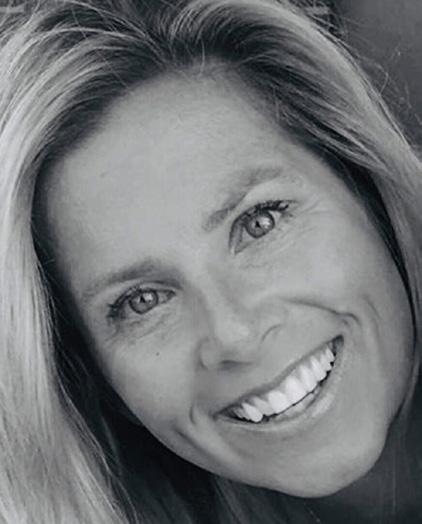
Nikki Pattillo graduated from Stephen F. Austin State University in Texas and began her career as a clinical and molecular biologist. As a child, Nikki was psychic, conversing regularly with her angels and guides, but it wasn’t until she was in her 30s that she accepted her gift. She is now an international author with Ozark Mountain Publishing.
She authored Children of Stars: Advice for Parents and Star Children, A Spiritual Evolution, A Day in Spirit: A Spiritual Calendar for Teens, and A Golden Compass. She has been featured on BRAVO and The History Channel and writes numerous magazine and newspaper articles to help raise awareness and consciousness of environmental and spiritual issues.
Moreover, the commodification of natural places—turning sacred sites into tourist destinations—can erode their spiritual essence. When nature is consumed rather than communed with, its sacredness fades. Yet, even in cities, there are pockets of wildness: community gardens, parks, rivers, and trees that break through concrete. The divine outdoors is not limited to remote wilderness. It can be found wherever we are willing to see it.
Often, children experience the sacred in nature naturally. They marvel at bugs, climb trees with reverence, and stare at clouds as though the sky itself were speaking. This unfiltered awe is a spiritual state that is one of wonder, openness, and trust in the moment.
Modern education and technology can dull this innate connection, but with encouragement, children can retain their sense of nature as sacred. Outdoor education, nature-based play, and family rituals like seasonal hikes or stargazing can nurture a child’s spiritual life without imposing dogma. In this way, the divine outdoors becomes a teacher, reminding both children and adults of the beauty of being fully alive and fully connected.
Certain places in the natural world are universally recognized as holding spiritual power. These include Mount Kailash in Tibet, Uluru in Australia, Sedona in Arizona, the Ganges River in India, and Glastonbury Tor in England. People report feelings of heightened awareness, healing, or inspiration in such locations.
These sacred geographies often align with ley lines, magnetic anomalies, or ancient traditions. While science may not fully explain their power, their impact on the human spirit is undeniable. They draw pilgrims, seekers, and travelers not just for their beauty
but for the way they awaken something timeless within.
Such places teach us that the Earth has a memory and a spirit of its own. To walk on these lands is to step into a relationship with the planet as a sacred being.
Ultimately, sacredness is not confined to specific locations or elaborate rituals. The divine outdoors is available wherever there is sky, earth, water, and wind. Reclaiming sacred space in nature does not require the abandonment of religion or the adoption of a new belief system. It only requires a shift in perception.
To walk with reverence, to see with wonder, and to act with gratitude is to live spiritually in the world. A tree becomes a teacher, a river a source of grace. Even the changing weather becomes a kind of sermon on impermanence and resilience. In this way, we are invited not only to visit sacred spaces in nature but to live as though the Earth itself is a sanctuary and we are its caretakers and kin.
Nature has always been humanity’s original temple. From the earliest humans who danced around fires under the stars to the poets, mystics, and scientists who continue to marvel at the cosmos, the divine has always lived outdoors. In a time when many feel spiritually disconnected or environmentally despairing, returning to sacred nature is both healing and revolutionary.
By finding the divine outdoors, we re-root ourselves in the larger web of life. We remember that we are not visitors on Earth, but vital participants in a sacred dance that includes rock and rain, bird and breeze. And perhaps most importantly, we remember that the sacred is not elsewhere—it is here, now, in the living world around us.


IIn a fast-paced and chaotic world, self-care is essential for experiencing health on all levels. Given the high demands of life and the chaos we face in the world, building self-awareness and living a mindful life are more important than ever.
We are recognizing that sustainable health encompasses more than just physical well-being. Mental hygiene, emotional stability, and spiritual and energetic health are fundamental to our wellness. Understanding ourselves as a whole reinforces the idea that all aspects of health are interconnected, highlighting the importance of taking care of ourselves with an integrative and holistic lens.
Self-care is one of the most trending digital and social media movements: "The global wellness market, which includes self-care, is estimated to be worth over $6.3 trillion.1"
Since COVID, it has become increasingly clear that prioritizing our well-being is essential. The food we consume and the information we engage with profoundly impact our mental health. Embracing
proactive measures for our physical and mental wellness marks a significant step forward. However, we must navigate the rise of the self-care industry, which suggests that self-care is not just about being but also about doing, often with a price tag. Luxurious self-care experiences can be appealing, but it's important to remember that true self-care goes beyond a luxurious trip to the spa, a manicure, or a soothing face mask to ease stress.
While these practices can enhance our lives and provide benefits, they become superficial and meaningless if we do not integrate self-care into our daily routines. It is important to prioritize self-care every day, not just as a temporary escape from our struggles or as a way to create appealing content for social media. Recognizing the importance of nurturing ourselves daily can significantly affect how we face our challenges.
The heart of true self-care goes beyond a spa day or buying essential oils and candles. Self-care is connected with self-love. Self-care is not just about feeling good, feeling relaxed, or taking time for yourself.

Self-care is a commitment to love, honour, and protect one's well-being. It is about nurturing oneself with compassion and kindness while building boundaries that honour and respect one's needs. It is a state of acceptance and appreciation for oneself, where our actions support our physical, emotional, and spiritual health.
At times, this is where self-care is used loosely. Luxury candles, essential oils, spa getaways, and deep tissue massages can be ways to pamper ourselves. However, true self-care is often misunderstood when it overlooks the importance of loving yourself, living consciously, and healing your inner wounds. These moments can become superficial remedies, feeding the illusion that you truly care for yourself while avoiding facing your challenges head-on. Real self-care asks us to look deeper—to tune in and listen to what our body, mind, and soul are asking for.
Let me explain further. I was born and raised in France, but my parents were Portuguese immigrants. I was taught to follow in my mother's footsteps, where self-care was seen as selfish. The expectation was for women to work outside the home while cooking every day, raising children, caring for their husbands, and maintaining a spotless house. In this hierarchy, everyone else comes first, and women are placed at the bottom of the list.
What did it bring? For my mom, it meant living a life of sacrifice and people-pleasing, which resulted in watching her live with depression most of our lives and reading sadness in her eyes. For me personally, I spent years battling the idea that I deserved self-care. I was constantly striving to meet everyone's expectations, fix everything, and save everyone. I was disconnected from my body, living in survival mode.
My autoimmune disorder diagnosis became my wake-up call.
Self-love and self-care were the most challenging pieces to connect in my healing journey. My wake-up call came in the form of an autoimmune disorder. Looking back, it has certainly been a process, and with my healing journey and my studies in trauma, I have come to understand why it was so challenging and why it still is, at times. However, I have since learned. And I am consciously aware. For example, someone who has unpredictable, abusive, or unavailable parents may act without boundaries and live to fulfill the expectations of others to feel safe, loved, and accepted.
When your nervous system doesn't feel safe, particularly after childhood trauma, emotional neglect, or painful experiences, it can remain in survival mode. Stillness can even be triggering for some.
A massage can momentarily relax the muscles and body, and a spa day certainly brings tranquillity. However, can these truly be acts of self-care if you are tending to a wounded heart while striving to fill everyone else's cup in the hope of feeling seen, loved, heard, and accepted?
To cultivate self-love and self-care, we must slow down and be fully present and mindful of ourselves, our inner dialogue, our thoughts, and our emotions. Embracing conscious mindfulness allows us to connect deeply with ourselves; through self-awareness, we can create the transformative changes needed in our lives. Remember, you can't change what you are not aware of. This journey involves facing our unresolved problems head-on rather than avoiding them and seeking distractions.


Émilie Macas is a transformational holistic educator, Reiki Teacher and trauma counsellor, mindfulness and Chopra meditation educator, certified life coach, author, and motivational speaker.
Émilie has owned a private practice for over a decade. She continues to empower others to adopt a spirit of raw truthfulness, guiding them to their inner wisdom and empowering them to connect with their inner pharmacy.
When we start honouring our needs, we align ourselves with our true desires and cherish them. This journey helps calm our nervous system and encourages us to engage in what truly serves us. Establishing boundaries becomes essential. We discover that "no" is a complete sentence, and we cannot pour from an empty cup.
Spiritual self-care thrives on boundaries, which are essential. Protect your energy by distancing yourself from those who drain it—people who complain, gossip, have a victim mentality or are superficial.
Self-care is a holistic process of creating habits and behaviours that will support your well-being. It means making the choice to be consistent with what we need in our lives and our values. It is about embracing ourselves with compassion rather than exhausting ourselves to please everyone. It's about creating healthy boundaries and respecting our needs. It's about living our lives in a way that allows us to find moments for ourselves without escaping.
In his article, "How To Make SelfCare A Priority In Recovery (And Why This Is Important For All)," Chopra outlines six essential elements of self-care2:
1. Self-Love and Compassion: Recognizing that loving oneself is foundational to extending love and care to others.
2. Balanced Lifestyle: Maintaining harmony through adequate sleep, proper nutrition, and regular exercise.
3. Healthy Boundaries: Setting limits to protect one's energy and well-being.
4. Self-Awareness: Engaging in practices that enhance mindfulness and emotional intelligence.
5. Self-Acceptance: Embracing
oneself without judgment or criticism.
6. Mindful Living: Being present in each moment and making conscious choices that align with one's values
Self-care is a daily journey of mindfulness and awareness of our needs. It means being present for ourselves with compassion, respect, and love. True self-care transcends trends. It is not merely about doing things. Even in our spiritual practices, self-care can sometimes mean stepping away from journaling or rituals. It can simply be about silencing the external chaos and allowing ourselves a guilt-free nap in the middle of the day. It's about embracing silence and stillness, reminding ourselves of our inherent worth—that we are love, we are enough, and that we do not need to fill anyone else's cup to be seen, loved, or accepted.
Self-love and self-care are supporting and nurturing not only our well-ness but our whole-ness.
Wholeness is who we truly are!
Love and Light,
References
"The Global Wellness Economy Reaches a New Peak of $6.3 Trillion––and Is Forecast to Hit $9 Trillion by 2028." Global Wellness Institute, 10 Dec. 2024, globalwellnessinstitute.org/press-room/press-releases/ the-global-wellness-economy-reaches-anew-peak-of-6-3-trillion-and-is-forecastto-hit-9-trillion-by-2028/.
"How to Make Self-Care a Priority in Recovery (and Why This Is Important for All)." Deepak Chopra™, 24 Feb. 2017, www.deepakchopra.com/articles/howto-make-self-care-a-priority-in-recoveryand-why-this-is-important-for-all/?utm_ source=chatgpt.com.

By Polly Wirum

by Poonam
If you are like most people, the process of death and dying crosses your mind occasionally. This might be when you are grieving for a loved one or thinking about your own mortality. I interviewed a death doula with the hope of discovering and even sharing some of the insights she has gained while helping the dying and their families.
As I write this, I'm on the second day of travel, leaving a remote part of Alaska. This isn't important to the article, except it highlights the difficulty of navigating the care and transportation of a human body after death has occurred in outlying areas. This, and many other things, were brought to my attention by Leslie, who is a certified death doula.
Death doulas offer many services, including emotional and spiritual help to the dying and their families. The assistance can also be logistical, connecting families to resources, and often, it creates a safe space that allows difficult conversations to flow. This service can be started days, weeks, or even months before the actual death
occurs and often continues after a family's loved one has crossed over.
Death doulas help mitigate the stress in a situation known for intense feelings, emotions, and expectations all tangled up in memories and responsibilities.
Training and certification are available but not legally required. Perhaps the most important quality of a talented death doula is compassion and a willingness to come face to face with death and walk others through a doorway of the unknown.
Peaceful courage is also needed to stay steady and present with others during this time. When the Universe opens this transitional portal, it will look and feel different for each of us. It's impossible to preplan words of comfort. Everyone lets go of their earthly connection differently. Sometimes, there are no words needed, only sitting with someone as they release the heaviest parts of their personal journey, allowing them to move on with peace.

The Story of How This Death Doula Came to Be
Leslie's decision to become a death doula was unplanned; it came to be because of a dear friend's death.
Years ago, Leslie committed to helping her friend prepare for medically assisted death in Canada. She witnessed her spirited friend lose almost everything to a very progressive chronic illness that guaranteed a shortened life. Julie, her best friend, lost her vibrant energy, muscle control, hair, teeth, and identity as a musical performer. What wasn't taken away from Julie was her clarity, humor, and, somehow, her ability to belt out words from a song at the most unpredictable times.
Leslie arrived weeks before Julie took her last breath. She helped get the house in order and supported Julie's husband as he prepared for the single greatest loss in his life. Mostly, she offered a type of courage and love that came from somewhere deep inside her.
Two physicians, Julie's husband, and Leslie, helped Julie plan and experience her death with love and courage.
Something spiritual and possibly karmic opened up, and Leslie felt things like never before. The experience eventually brought her to a place of deep healing, but first, she had to navigate her own fears, emotions, and grief.

Polly Wirum is a psychic, life coach, and writer. Years ago, she experienced a health crisis that led to a complete spiritual and life transformation. When she thought her life was crumbling, the universe was easing her grip on everything, distracting her from the truth. The healing helped her discover the beauty of a joyful and uncomplicated life.It is here that she connects with wisdom and magic. She shares this with her clients through life’s coaching psychic readings and spiritual retreats. visit Pollywirum.com
Leslie has discovered that death can be a beautiful release of patterns and beliefs that allow one to merge into a new consciousness. She fully believes in life after death and often feels the presence of her friend Julie. In fact, she believes her friend helped orchestrate her decision to become a death doula from the other side.
Leslie was preparing to speak at her friend's memorial service when she turned on the radio, and the song, So Hard (a song for grieving) came on. This was followed by Glennon Doyle's podcast- We Can Do Hard Things. Glennon was interviewing Alua Arthur, who is a well-known death doula who teaches classes. The conversation was about death, the value of death doulas, and how to become one. As she listened to the interview, she felt a calling to discover more about the death experience and get trained as a death doula. This decision helped Leslie process grief and completely changed her life.
Another piece of this story was when Leslie found in Julie's handwriting the phrase, -We Can Do Hard Things.
Leslie helps bridge the gap between the living and dying. Often, the dying wants to talk about how they are feeling, any fears they have, and even memories they would like to share.
She wants families to know that they can spend time with the body after death. This might involve lovingly caring for the body while music is played, poetry is read, or whatever the family believes is the perfect send-off for their loved one.
Noticing The Magic
I texted Leslie a couple of questions from my ferry ride. She had been outside enjoying the sun and beautiful Alaska views while thinking of her friend. Two ravens landed right next to where she was sitting. She thought immediately of the two large black birds that are the main focus on the cover of Julie's featured music.
Leslie has also noticed that before people cross over, they are often reaching out to the other side. This might be when the person going through transition spends time resting or sleeping and dreaming about their loved ones who have died. She also has seen the dying talking with and even stretching out their arms to connect with dead loved ones.
One of the gifts that has come out of working as a death doula is the ability to notice the magic in life and not get caught up in the dramas that ultimately mean nothing as you release your last breath.
Death is a basic human experience that we will all go through. Having the ability to choose how your life will be celebrated and your body cared for can shift the energy of how death is viewed. There are many ways to explore death and dying, but the value of bringing this subject out of the dark is immeasurable. Talking about the process can decrease stress and even bring closure to a monumental experience.
Thank you for reading this article. I hope it not only shares a resource available to you and your family but also reminds you of the magic in this life, the connections we make, and how they both continue on after death.


By Joey Santos


Joey Santos is a Celebrity Chef, Life Stylist and Co-Host of The Two Guys From Hollywood Podcast on Spotify. A Columnist for The Eden Magazine since 2016. Joey was raised in NYC, Malibu, and West Hollywood. He is the son of Film and Television Actor Joe Santos, and his Grandfather is World-Renowned Latin Singer Daniel Santos. To follow Joey on IG: @jojoboy13 To contact Joey visit whynotjoe@gmail.com
Those words carry a powerful message—one that resonates deeply with the nation's soul. Yet, I often wonder how many Americans today truly understand or even remember them. We regularly rise—or in some cases, take a knee—for "The Star-Spangled Banner" at sporting events, singing along as the chosen vocalist of the moment makes their way through the anthem. We salute, we reflect, and we sometimes critique the performance. To be fair, it is a challenging song to perform, both lyrically and musically. Personally, I've always found "America the Beautiful" to be more moving—simple, melodic, and profoundly heartfelt.
While "The Star-Spangled Banner" is our official national anthem, "America the Beautiful" remains one of our most cherished patriotic songs. Its words celebrate the natural beauty of our land and the ideals that unite us, contrasting with the martial tone and historical specificity of the anthem.
As we listen to these songs or read poems and stories about America today, do they still stir the same pride in us? Do they still inspire us to strive for greatness? Do we still hold on to the dream of a future where we can provide safety and opportunity for our families, no matter what shape or form those families take? Do we still feel free—that exhilarating sense that all we dream of is within reach?
Is history still permitted to teach and guide us, reminding us of our mistakes and helping us grow? Or are we too afraid of confronting painful truths, missing the chance to heal and evolve? Can we still recognize the meaning behind the sacrifice, the reasons we risk so much in the name of justice and freedom? Are we still pursuing knowledge and truth—not just as a right, but as a responsibility?
At a time when our country feels uncertain—when people feel angry, divided, and overwhelmed—it is easy to be-
come disillusioned. Dishonesty begins to replace clarity. Confusion sets in. We risk becoming numb, disconnected, and complacent. History has shown us what can happen to great civilizations when they lose their moral compass. We must ask ourselves: Where are our leaders? Who are they, truly? When they speak, do we feel a sense of purpose, safety, or trust? Can you recall a recent speech that moved you to action, inspired hope, or reaffirmed your belief in what this country stands for?
Many of us can quote great leaders— presidents, poets, philosophers. But how many of us truly live by their wisdom? Who among us today could write a song that would make us feel proud again—all of us, united, uplifted, secure?
Sometimes, a single lyric can capture the spirit of an entire generation. "From sea to shining sea" does just that. It speaks to the vastness of our country, yes—but more importantly, to the shared experience of its people. From distant shores to familiar neighborhoods, we, the people, make this land what it is. Let us not forget or deny the hands that built it or the sacrifices—often made silently and sometimes unjustly—that paved the way for progress.
Yes, America brought hope. It promised a future. It stood for freedom—the freedom to think, to dream, to build, to speak, and to be. It called on us to stand for truth, to act with honor, to defend the values that define us, and to see in each other the spark of humanity that calls forth empathy, bravery, and love.
America isn't perfect. But neither are any of us. What matters is that together, those of us who continue to hope, to build, to serve, to love, and to strive— we will keep "America the Beautiful" truly beautiful. For everyone. As it was always intended.
We have earned that right—and the responsibility to uphold it.









Excerpted from Clamor: How Noise Took Over the World—and How We Can Take It Back. Copyright (c) 2025 by Chris Berdik. Used with permission of the publisher, W. W. Norton & Company, Inc. All rights reserved.
By Chris Berdik
We tend to think about noise as a people problem, but noise is nature’s problem, too. As the din from our airplanes, roads, ships, and natural resource extraction, among other sources, spreads to the most remote places on land and in the oceans, it hinders animals trying to communicate, sense predators, hunt for food, and find their way. And unlike humans, who can pop on noise-cancelling headphones or find other auditory escapes, nature is always listening, or at least trying to.
Few people understand the implications better than Kurt Fristrup, a bio-acoustics expert who recently retired from the Natural Sounds and Night Skies Division of the National Park Service.
I interviewed Fristrup as we hiked up to Arthur’s Rock in Colorado’s Lory State Park, and he pointed out the distinct bird calls we enjoyed along the way. “I’ve come to believe,” he told me, “that when we mask nature’s sounds with more and more noise, we haven’t simply lost oppor-
tunities to hear those sounds; we’ve conditioned people not to listen.”
Gazing across an expanse of open water, it’s easy to imagine a vast, soundless world beneath the waves. The notion of the silent watery deep has a certain poetry befitting the ocean’s enduring mystery, and it makes intuitive sense to those of us whose time submerged is typically limited to single breaths within steps of shore. The instant we dive below, the noise of everyday life vanishes, and we can revel in serene weightlessness for a few moments until our lungs force us back to the surface.
But in fact, the aquatic world is filled with symphonies of sound. The lash of rain and wind on the surface echoes below, while geothermal vents gurgle and hiss furiously on the seafloor. Fish chirp and grunt to each other, whales sing their slow, eerie hellos, and legions of snapping shrimp emit a constant crackle that’s powerful enough at close range to stun their tiny prey.

Hearing is especially important for many animals living in the ocean’s expanse, where sound travels farther and faster than it does through the air and where light to see by is at a premium. At certain depths, for example, whale vocalizations can be heard across thousands of kilometers, while both baby reef fish and coral larvae begin life in the open ocean and find their reef homes partly by listening for them.
The ubiquity of noise pollution in our increasingly crowded oceans matters as much as, if not more than, its decibel count. Every day, tens of thousands of tankers, cargo vessels, and other commercial ships churning through the oceans. Most vessel noise ranges from about 170 to 190 underwater decibels within a few meters of the ship and carries for miles before fading away. Sonar, pile driving, and the air-gun blasts of seabed explorations for oil and gas are all louder, but they are also localized and episodic, Southall explained. “But vessels are everywhere, and their noise never stops. It never shuts off.”
The problem is getting worse. A 2012 analysis in the journal Nature found that the ambient sound levels of the deep ocean had been rising about 3.3 decibels per decade since 1950, thanks largely to the low-frequency signature of heavy ships (under 1,000 hertz), which overlaps the sweet spot of vocalizations for many baleen whales. That accumulation of noise amounts to nearly 20 extra decibels of constant background sound, an extraordinarily rapid shrinking of the whales’ sensory world over a time well within the lifespan of many species. And now the underwater din is poised to spread into the Arctic as polar ice melts and the few remnants of relatively undisturbed ocean are open to commerce and the extraction of natural resources
Marine biologists have observed that whales respond to this incessant sonic assault much like people do in a noisy
bar. They raise their voices, stay closer together, and simplify what they say. In one study, scientists attached suction-cup acoustic recorders, known as D-tags, to North Atlantic right whales to track their social “up calls,” which are brief, rising whoops the whales use to stay in touch with each other. The researchers found that whales tried to keep a 10–12 decibel advantage over the background sound, which meant their up calls ranged between 117 decibels in relative quiet to 150 decibels—essentially, whale shouting—when things got noisy. Every one of these extra-loud vocalizations saps energy. Meanwhile, other whales just give up.
Vessel noise also makes whales less efficient at foraging for food. Humpback whales, for instance, hunt little silver fish called sand lances by diving deep and executing a series of acrobatic rolls to corral the schooling fish for easier gulping. But when a passing ship makes things noisy, humpbacks become less intense hunters, diving slower and making fewer turns, according to an acoustic-tag study in the Stellwagen Bank National Marine Sanctuary, a biologically rich area of the Atlantic Ocean about 25 miles east of Boston.
An ever-shrinking sensory world challenges any animal, but it can be especially threatening to an endangered species like the North Atlantic right whale. Commercial hunting throughout the nineteenth century pushed these whales to the brink of extinction, but in 1935, a hunting ban allowed for an uneven recovery.
The number of right whales crept upward in subsequent decades, reaching an estimated 500 animals in 2010 before suddenly declining again to about 360 whales as of 2024. While scientists remain puzzled by the right whale’s recent setback, they have identified a mix of potential culprits. For instance, female right whales are having fewer calves, and the recovery time for females between births has

doubled. The slowdowns in calving are likely tied to declines in nutrition. Foraging whales must gobble down billions of zooplankton every day to sustain their 70-ton bodies, and as climate change shifts the availability of this prey, the whales must spend more time and energy finding enough to eat.
Pervasive underwater noise compounds all these challenges. Leila Hatch, a marine ecologist with NOAA’s Office of National Marine Sanctuaries, determined that right whales in the crowded waters off Massachusetts have lost about twothirds of their acoustic range compared with historical periods during which the ocean was 10 decibels quieter.
“In a quieter ocean, these animals could hear a mate or family member call from twenty kilometers away, but that’s now reduced to a kilometer or two,” Hatch explained. “Noise just adds to the fabric of what’s making it harder for these whales to get by.”
Reducing underwater noise will be a massive challenge. The closest thing to an overarching authority on the high seas is the International Maritime Organization (IMO), a United Nations agency that sets standards for shipping safety, security, and environmental stewardship. Quieter ships have been on the IMO agenda since 2008. These negotiations have focused on consensus-building, which has kept the discussions amicable but also slowed progress to a crawl.
Technically, we know how to shush a ship. Research vessels designed for enhanced quiet are equipped with precision-engineered propellers, which churn up less cavitation. These changes to propulsion systems can be combined with more streamlined hulls, drag-reducing coatings, and sound absorption in engine
rooms, which can together achieve a drop of tens of decibels compared to typical ship noise. Ships with these upgrades are not only quieter but also more efficient, which saves money on fuel. More efficient ships will also help shipping companies meet targets for reducing greenhouse gas emissions.
Nevertheless, ships are expensive long-term investments, and because vessel noise is an aggregate problem rather than the fault of a few ultra-loud transgressors, any solution must be implemented across the industry. In 2014, the IMO finally issued voluntary guidelines for making ships quieter, and then they waited a few years to see if shipbuilders would comply with them. Most did not.
In 2023, the IMO updated its voluntary guidelines to emphasize that ships operating in Arctic waters near sound-sensitive species need to be quieter, but the organization did not move to make any noise reductions mandatory.
Nevertheless, this sustained attention is progress, however incremental. And Fristrup offered another reason for cautious optimism after we’d reached Arthur’s Rock and were enjoying the sun-drenched view. “In probably every talk I’ve given about noise, the dominant theme and my closing remarks are that noise is unique as an environmental pollutant because it’s so ephemeral,” he explained.
Decibels don’t linger in the atmosphere for centuries like greenhouse gases. Noise doesn’t accumulate in the soil or float along in the water like microplastics waiting to be eaten by fish, and eventually by us.
“Once you reduce noise by treating its source, it’s gone, and the recovery can begin right away.”

Adopt Today



By Becky Westwood, Organisational Psychologist
The idea of receiving feedback is something that can inspire anxiety, dread, and even fear in many of us. However, when done the right way, feedback can be a powerful tool for an individual's personal growth and development.
But what exactly do we mean by feedback? Firstly it is not a universal truth! Most of the time, the information we receive is grounded in someone's subjective experience of us or our work. It is very important to remember this as the first step to feeling more empowered when receiving feedback. What we are hearing isn't universally true or false, nor is it right or wrong. However, perspectives can provide new insights, unlock blind spots, and help us build greater awareness as we progress toward our goals.
As I discovered people can struggle with receiving feedback for a variety of reasons.
• Fear of Judgment: Worrying about being perceived as overly sensitive or defensive.
• Lack of Clarity: Difficulty understanding the specific points being made.
• Timing Issues: Frustration with receiving feedback too late to make changes.
• Relationship Concerns: Fear of damaging relationships with the feedback provider.
• Limited Opportunity for Discussion: Lack of space to ask questions or clarify misunderstandings.
These examples are likely rooted in fear. As we know, when you feel fear, your threat detection system fires, and the options become fight, flight, or freeze. There are a range of approaches for navigating these feelings, from the 'just push through' to the 'avoid at all costs' method. These approaches are used to help recipients regain a sense of control over themselves, their reactions, and the process. However, this often comes at the expense of their well-being, relationships at work, and their future opportunities to learn, grow, and be recognized.
So, how can you change this and use perspectives to create possibilities, shifting the paradigm from fear to empowerment?
Don't wait for perspectives to find you
Given the above, it can be tempting to wait for your manager, leader, or peers to find you with their feedback. This might be in your regular oneto-ones, development conversations, or annual reviews. This can add to the feeling that we are engaging with feedback because we must. In fact, in my second research study, 76 percent of people said they use feedback because it's a 'have to.' This is hardly empowering.
Instead, you can take control by getting clear on what your professional goals are and what things you would like to change or develop. Then go out and actively seek perspectives that will help you achieve the changes you want. You can give permission to your leader to give you feedback more regularly and in a way that works for you.
You can also give yourself feedback –taking intentional time on a regular basis to reflect on your perspectives of how you are doing. Your perspective is just as valid as someone else's, and many people I work with have implemented a rhythm of reflecting on three things that went well and three changes they would make each week.
These practices may not stop feedback coming from other sources, potentially at unsolicited times, but they will help you to develop a more proactive and less fearful relationship with receiving feedback.
Share the responsibility It's important to remember that sharing perspectives is an exchange, not a transaction.
When seeking or receiving feedback, it's essential to establish clear expectations and understanding. You play an active role in this and by using clarifying questions, you can ensure that you and the feedback provider are on the same page. Some examples of great questions you can use to get clarity are; can you tell me more about what you've observed? Could you help me understand x? Are there specific?
These types of questions need to be asked with rapport, curiosity, and a willingness from each person to be open to the possibility that there may be something one has seen that the other may not have noticed. Leaving feedback exchanges with clarity instead of confusion will help you to have the confidence to decide what you'd like to do with the perspectives you've received.
Recognizing you have a choice
A perspective is not true or false, good or bad, right or wrong. It is simply someone else saying this is how I experienced x. They can be incredibly helpful to consider, but not all of them may need to be acted upon. Once you've received feedback, you have the power to choose how to respond. Here are some strategies to consider:
• Reflect and Discern: Take the time to consider the feedback. Are there recurring themes? Do these themes resonate with your own experiences and goals?
• Seek Multiple Perspectives: Consulting additional sources can provide a more comprehensive and holistic understanding of the situation.
• Choose Your Path: The decision to act or not to act is entirely yours. Sometimes, the most valuable feedback is the confirmation of your current course.
• Take Actionable Steps: If you decide to make changes, break them down into smaller, actionable steps.
• Consider the Context: Evaluate the feedback in light of your past experiences. Has similar feedback been offered before?
People working in organizations want to contribute, develop, learn, be valued, and be recognized for the work that they do. These involve becoming aware of how you are doing, aware of where you want to get to, your goals, and where you are in pursuit of them. All of this requires perspective. Each one of us has the power to leverage feedback that lies within us, provided that we approach receiving feedback with open-mindedness and a willingness to learn. To put it another way, feedback can be transformed into a catalyst for positive change.


Mowing the lawn is a regular task for homeowners, but what happens when it rains? You may be tempted to mow wet grass, especially when it’s overgrown and messy, but is it safe or effective?
This article explores why mowing wet grass can be risky when you might need to do it and tips for handling your lawn in damp conditions.
Can You Mow Wet Grass?
Answer: Mowing your lawn while it’s wet isn’t the best choice, and there are several reasons to consider waiting until it dries out. While it might seem harmless, wet grass can create more problems than you might think.
Why You Should Be Cautious About Mowing the Grass When It’s Wet
Mowing wet grass can cause more harm than good. Here’s why:
Safety Hazards:
Wet grass is slippery, increasing the risk of accidents while mowing. The combination of water and electric mowers— especially those with extension cords—can be dangerous, posing a risk of electric shock.
If your lawn has slopes or uneven terrain, wet conditions can make mowing even more hazardous.

Mowing wet grass doesn’t produce a clean cut; it often tears, resulting in ragged edges that are more susceptible to disease and stress. Wet conditions also promote fungal growth and the spread of pathogens, as the mower can transport spores across your lawn.
Additionally, waterlogged soil is easily compacted under the weight of the mower, leading to ruts, rivets, and uneven cuts, which can stress the lawn and damage the soil structure.
Mowing when the soil is mushy can also exacerbate weed issues by spreading seeds stuck in clumps of wet grass, allowing them to root in new areas.
Wet clippings often clump together, clogging the mower and creating piles that smother the grass, leading to unsightly dead spots.
Frequent cleaning of your mower is needed, which can be dangerous if done improperly. Wet conditions also cause soil to become soggy, leading to ruts and uneven cuts as mower wheels dig into the ground.
Mowing wet grass can significantly impact the maintenance and longevity of your mower. Wet clippings stick to the
underside of the mower deck, increasing the need for frequent cleanings, which can be dangerous if done improperly.
The constant exposure to moisture can also dull mower blades faster and lead to rust, reducing cutting efficiency and requiring more frequent sharpening or replacement. Prolonged exposure to wet conditions can cause other mower components to rust or corrode, resulting in costly repairs and a shortened lifespan for your equipment.
How Soon Can You Cut Grass After It Rains?
Mowing after rain depends on various factors, including the type of mower, lawn conditions, and your safety judgment.
Test the Moisture Level:
Before mowing, perform a touch test—if the grass feels wet, it’s too soon. Dewy grass in the morning might be manageable, but rain-soaked grass is not.
You can also visually inspect the lawn to see if blades are bent over; wait until they stand upright for an even cut.
Speed Up Drying:
Using a leaf blower to remove excess moisture can help speed up the drying process. If sunlight is available, let the sun do its work for a couple of hours before mowing.
How to Tell if Your Lawn is Too Waterlogged to Mow:
Before mowing, check your lawn for signs of excess moisture. If you notice standing water, soggy soil or if your footsteps leave deep impressions, the ground is too saturated to mow.
Wait until the soil dries out and feels firm underfoot to avoid harming your grass and soil structure.
Powerful commercial mowers can sometimes handle wetter grass, but it’s still best to wait if possible. Never use corded electric mowers in wet conditions, as water and electricity are a dangerous mix.
Can you cut wet grass with a gas mower?
Yes, you can mow wet grass with a gas mower, but it is not recommended due to several challenges. Wet grass tends to clump, which can clog the mower deck and lead to uneven cuts, as the blades may tear rather than cut cleanly. Additionally, mowing wet grass can put extra strain on the mower’s engine and components, potentially causing damage over time.
Can you mow wet grass with a reel mower?
Mowing wet grass with a reel mower is not recommended. Along with similar complications with a gas mower, a reel mower requires more physical exertion to push the mower in wet grass.
Can you mow wet grass with a riding mower?
No—wet conditions increase the risk of slipping and can compact the soil, creating ruts and affecting drainage.
Can you cut wet grass with an electric mower?
Mowing wet grass with an electric mower is not recommended. Using
an electric mower in wet conditions poses a safety hazard due to the potential for electric shock from moisture exposure.
When Mowing Wet Grass Might Be Necessary
Sometimes, mowing wet grass is unavoidable. Here’s when it might be okay:
• Emergencies and Overgrowth: If your lawn is overgrown and waiting isn’t an option due to pests, HOA rules, or other urgent needs, you might have to mow damp grass.
• Light Dew or Morning Moisture: Mowing slightly damp grass, like early morning dew, can be manageable. Avoid mowing when the grass is soaked.
Tips for Mowing Wet Grass Safely If you must mow wet grass, follow these safety tips:
Use Sharp Blades:
Ensure your mower blades are sharp to make cleaner cuts, reducing stress on the grass.
Adjust the Mowing Height:
Set your mower slightly higher than usual to avoid cutting too low and to prevent the mower from bogging down.
Mow Slowly and Steadily:
Take your time to avoid clogging the mower and make frequent stops to clear clippings. Using a bagger attachment can also help collect clippings and avoid clumping.
Clean the Mower Frequently: Wet grass can quickly accumulate under the mower deck, so stop occasionally to clean it out. After mowing, thoroughly clean your mower to prevent long-term damage.
https://sodsolutions.com/
